

How To Describe A Cat In A Story (100+ Examples & Guide)
Filled with mystery, grace, and independence, cats have captivated humans for centuries.
But how can we truly capture the essence of these unique feline creatures in our storytelling?
Here is how to describe a cat in a story:
Describe a cat in a story by detailing fur texture, pattern, eye color, size, tail, ears, vocalizations, movements, personality, habits, facial expressions, and interactions. This approach vividly brings feline characters to life, enhancing the narrative.
In this ultimate guide, we will explore various techniques and perspectives that will enable you to bring your furry protagonist to life on the page like never before.
Types of Cats in Stories

Table of Contents
In stories, cats come in various types that add depth and intrigue to the narrative.
Here are some common cat archetypes you can consider when describing a feline character:
- Mischievous Cats: These cats have an affinity for getting into trouble and causing chaos wherever they go. They make excellent comedic relief or catalysts for plot development.
- Wise Cats: Known for their wisdom and mystical abilities, these cats often serve as mentors or guides for main characters. They possess supernatural knowledge and offer sage advice at crucial moments.
- Heroic Cats: These brave felines excel in acts of heroism, saving the day with their intelligence, agility, and courage. Their actions inspire others to do good while overcoming adversity.
- Regal Cats: Representing elegance and sophistication, regal cats are usually associated with royalty or aristocracy in fairy tales or historical settings.
- Enigmatic Cats: Often mysterious creatures with profound secrets, these enigmatic cats provoke curiosity and invoke a sense of wonderment throughout the story.
Remember to choose a cat archetype that aligns with your story’s tone and purpose while considering how each type can contribute to the overall plot progression.
Describe the Cat’s Fur Texture and Length
When describing a cat’s fur texture, you can use words like soft, silky, fluffy, or smooth.
These words help create an image in the reader’s mind about how the fur feels to touch. For example, “Her fur was as soft as silk” provides a vivid description of the tactile experience.
The length of a cat’s fur can also vary greatly.
Some cats have short fur that lies close to their bodies while others have long hair that flows gracefully. Use terms like short-haired or long-haired to convey this aspect of the cat’s appearance.
Remember to keep your language clear and concise when describing a cat’s fur texture and length.
Here are more examples:
- Silky and Long : This type of fur is characteristic of breeds like the Maine Coon. It’s smooth to the touch, with a lustrous sheen, and flows elegantly as the cat moves.
- Plush and Medium-Length : Often seen in British Shorthairs, this fur feels like a plush, dense carpet. It’s not too long, but thick enough to sink your fingers into.
- Crisp and Short : Reminiscent of the American Wirehair, the fur here is short and has a slightly rough, crimped texture, almost like a woolen fabric.
- Sleek and Short : Common in Siamese cats, this fur is short and lies flat against the body, offering a sleek, glossy appearance that’s smooth to the touch.
- Curly and Varied-Length : Found in breeds like the Devon Rex, this fur can vary in length but is defined by its soft, curly structure, giving the cat a unique, wavy appearance.
- Sparse and Suede-Like : The Sphynx, known for its lack of fur, actually has a very fine layer of fuzz that gives it a suede-like texture, warm and smooth to the touch.
- Fluffy and Long : Typical of the Persian cat, this fur is luxuriously long and fluffy, creating a soft, cloud-like texture that’s thick and requires regular grooming.
- Velvety and Short : Reminiscent of the Russian Blue, this fur type is short, dense, and has a velvety texture, feeling luxurious and soft under the hands.
- Coarse and Thick : Some cats, like certain street cats or mixes, can have a coarser, thicker fur. It’s more rugged to the touch, designed for practicality and protection.
- Feathery and Fine : Cats with feathery, fine fur, often found in breeds like the Oriental Longhair, have a delicate, light texture that’s airy and elegant to the touch.
Describe the Cat’s Fur Pattern and Color
You can also describe a cat’s fur pattern and color.
A tabby cat has a distinctive fur pattern characterized by bold stripes, swirls, or spots on its coat. The base color of a tabby can vary from golden brown to grayish blue or even reddish hues.
These cats often have an “M” shape on their forehead and striking markings around the eyes.
Siamese Cat
Siamese cats have smooth and pretty bodies with soft, short fur.
Their fur has a special pattern where the tips of their ears, their paws, tails, and faces are a darker color than the rest of their fur. This makes them look really beautiful, especially with their big, blue eyes that are shaped like almonds.
Calico cats boast vibrant coats with patches in different colors such as black, orange, and white all blending together harmoniously. These patches result from genetic traits causing multiple colors present in one feline’s coat.
Each calico appears distinct due to varying size and arrangement of colored patches.
Describe the Cat’s Eye Color
A cat’s eye color can vary greatly, adding a touch of individuality and charm to their appearance.
Here are some common eye colors found in cats:
- Bright Green : This vibrant color is often seen in breeds like the Russian Blue and can be quite striking against their grey fur.
- Deep Blue : Siamese and Ragdoll cats have really deep blue eyes that are very pretty and shiny. Their eyes can look like bright blue gems, especially when the light shines on them.
- Golden Yellow : A common eye color in many cats, this shade can range from a light, lemony yellow to a deep, rich gold.
- Copper : Found in breeds like the Persian, copper eyes are a deep, intense orange, giving a warm and glowing appearance.
- Hazel : Hazel eyes in cats are a mix of green and brown, creating a unique and variable color that can change in different lighting conditions.
- Amber : A rarer color, amber eyes in cats are a golden brown shade, which can appear almost honey-like.
- Odd-Eyed (Heterochromia) : Some cats, like the Turkish Van, can have one blue eye and one of another color, often green or gold, due to a condition called heterochromia.
- Greenish-Yellow : This color is a blend of green and yellow, giving a bright, lime-like hue that’s quite eye-catching.
- Light Green : A softer and more subtle shade than bright green, light green eyes can be found in breeds like the Norwegian Forest Cat.
- Aqua or Turquoise : A rare and stunning color, aqua or turquoise eyes are a mix of blue and green and are often seen in breeds with a colorpoint pattern, like the Himalayan.
By incorporating specific details about a cat’s eye color into your story, you can create vivid characterizations that resonate with readers’ emotions.
Describe the Cat’s Size and Build
Cats come in various sizes, ranging from small to medium-sized.
A typical adult cat weighs between 8 and 10 pounds, though some may be heavier or lighter depending on their breed and individual characteristics.
Their bodies are lean and agile, with a slender frame that allows for quick movements.
Small cats are usually compact in size, weighing around 5 to 7 pounds. With their petite build, they appear delicate yet graceful. Their slim bodies make them nimble climbers and excellent hunters.
Medium-Sized Cats
Medium-sized cats tend to be more substantial than their smaller counterparts, measuring approximately 8 to 12 inches tall at the shoulder.
They have a well-proportioned body with strong muscles that give them both agility and power.
Regardless of their size or build, all cats possess an inherent gracefulness that adds charm to their presence.
Understanding these physical attributes will enable authors to paint vivid pictures of feline characters within their stories.
Here are 10 examples:
- Petite and Dainty: “The cat was petite, with a dainty frame that made her movements seem almost like a delicate dance.”
- Robust and Substantial: “He was a robust cat, substantial in size with a solid, muscular build that spoke of his strength.”
- Sleek and Slim: “This sleek, slim feline moved with a grace that belied its light, agile body.”
- Compact and Nimble: “With a compact and nimble frame, the cat navigated through tight spaces effortlessly.”
- Tiny and Fragile-Looking: “The kitten was tiny, almost fragile-looking, fitting easily into the palm of a hand.”
- Majestic and Large: “A majestic, large cat, she commanded the room with her powerful and imposing presence.”
- Average and Well-Proportioned: “An average-sized cat, its well-proportioned body was neither too lean nor too bulky.”
- Chunky and Plump: “The cat was chunky, with a plump body that waddled slightly as it walked.”
- Lanky and Tall: “Tall and lanky, the cat’s long legs added to its elegant and statuesque appearance.”
- Miniature and Toy-like: “It was a miniature cat, toy-like in its size, with a tiny body that was irresistibly cute.”
Describe the Cat’s Tail
A cat’s tail is a remarkable appendage that communicates various emotions and intentions.
It is a long, flexible structure extending from the base of the spine, covered in soft fur.
The tail serves multiple functions for a cat.
- Balance : A cat’s tail acts as a balance and stability mechanism when leaping or landing on narrow surfaces.
- Communication : Through their tails, cats express their emotions. When relaxed, the tail hangs low and still. If it stands straight up with fur puffed out, it signifies fear or aggression. A twitching or flicking tail could indicate curiosity or excitement.
- Playfulness : During playtime, cats often use their tails as toys, swishing them around to entertain themselves.
Understanding these aspects of a cat’s tail can enhance your storytelling by accurately depicting the feline characters’ mood and behavior within your narrative.
10 examples of how to describe a cat’s tail:
- Long and Plumed : This type of tail is often seen in breeds like the Maine Coon. It’s notably long and bushy, resembling a luxurious plume or feather boa.
- Short and Bobbed : Characteristic of the Manx breed, this tail is naturally very short, giving the appearance of a bob or sometimes almost absent.
- Thin and Whippy : Some cats, particularly Oriental breeds, have tails that are thin and flexible, moving with a whip-like motion.
- Fluffy and Bushy : Persian cats and similar breeds have tails that are very fluffy and voluminous, resembling a soft, bushy pompom.
- Ringed or Striped : Common in tabby cats, these tails have a pattern of rings or stripes, providing a distinctive, wild look.
- Curled or Kinked : Breeds like the American Ringtail have tails that curl or form a kink, giving them a unique and quirky shape.
- Tapered and Sleek : Svelte breeds like the Siamese have tails that are sleek and taper to a fine point, complementing their elegant body shape.
- Puffed-Up : When a cat is frightened or agitated, its tail may puff up, with the fur standing out to make the tail look larger and more intimidating.
- Lynx-Tipped : Some cats, like the Norwegian Forest Cat, have tails with a darker tip, reminiscent of a lynx’s tail.
- Straight and Rigid : When a cat is alert or curious, its tail may become straight and rigid, pointing upwards or outwards.
Describe the Cat’s Ears
When describing a cat’s ears in your story, it is important to pay attention to their size and shape.
Cats can have triangular, pointed ears that are alert and expressive.
They may also have rounded or slightly flattened ears that give them a softer appearance.
The size of a cat’s ears can vary greatly depending on the breed and individual cat. Some cats may have large, prominent ears that stand out, while others may have smaller, more delicate-looking ears.
Cats’ ear shapes can be described as either triangular or rounded. Triangular-shaped ears are usually tall with pointed tips, giving the cat an alert and attentive expression. On the other hand, rounded or flatter-shaped ears create a softer look for the feline.
Remember to observe each character’s unique features when describing their appearance!
Describe the Cat’s Vocalization
When it comes to describing a cat in a story, understanding their vocalizations is crucial.
Cats have various ways of communicating with humans and other animals using different sounds.
- Purring : This gentle, vibrating sound signifies contentment or pleasure. It can indicate that the cat is relaxed and comfortable.
- Meowing : Cats meow to communicate with their owners. The pitch and tone of the meow can convey different messages such as hunger, greetings, or requests for attention.
- Hissing : A hiss often indicates fear or aggression. It’s a warning sign that the cat feels threatened and is ready to defend itself if necessary.
- Yowling : This loud and drawn-out vocalization is commonly associated with mating behaviors or territorial disputes between cats.
Describe the Cat’s Gait and Movement
When it comes to describing a cat’s gait and movement, there are certain characteristics that can help bring your character to life:
- Graceful: Cats move with an elegant fluidity, their footsteps almost silent as they glide across the floor.
- Light-footed: With soft pads on their paws, cats tread lightly, leaving only a faint impression behind.
- Agile: Their bodies contort effortlessly as they leap high into the air or twist around obstacles.
A cat’s movements can also be described in terms of its mood or intention:
- Curious: When exploring new surroundings, a cat might cautiously take small steps before quickening its pace.
- Alert: When excited or hunting prey, a cat may lower itself closer to the ground and move stealthily with intense focus.
Remember to use vivid language when describing how your feline protagonist moves through the world — this will create depth and add realism to your storytelling.
Here is a good video about cat body language:
Describe the Cat’s Personality Traits
Cats have an array of distinctive personality traits that make them fascinating creatures.
Here are some characteristics commonly observed in cats:
- Independent: Cats are known for their independent nature, preferring to explore and do things on their own terms.
- Curious: With a natural curiosity, cats love to investigate their surroundings, pouncing on anything that catches their attention.
- Playful: Cats possess a playful streak that manifests through chasing toys or cleverly swatting at objects with quick reflexes.
- Adaptable: Cats exhibit adaptability by adjusting well to different environments and situations with ease.
- Reserved: Although affectionate towards their human companions, cats also appreciate personal space and time alone.
- Elegant: Known for their graceful movements and agile jumps, cats exude elegance in every step they take.
- Mysterious : Often associated with an enigmatic aura, cats have the ability to leave people wondering about what goes on in their minds.
Describe the Cat’s Habits
One of the fun and revealing elements of a cat description is to focus on the habits of the cat in your story.
Cats are notorious sun-seekers, often stretching out luxuriously in a beam of sunshine for hours on end.
Basking in the warmth not only satisfies their love of comfort but also helps regulate body temperature. Whether they sprawl across a windowsill or curl up on a balcony, cats can be found soaking up the sun’s rays with peaceful contentment.
Hunting Instincts
Cats have an innate hunting instinct ingrained in their DNA.
They possess exceptional agility and cunning, making them skilled predators.
With lightning-fast reflexes and razor-sharp claws, cats stalk and pounce on unsuspecting prey. This behavior is evident even when domesticated as they may chase after toy mice or imaginary creatures while exhibiting all the intensity of their wild counterparts.
Meticulous groomers, cats dedicate significant time to cleaning themselves throughout the day.
Using their tongues as comb-like instruments, they lick their fur meticulously from head to toe. This self-care routine not only keeps them clean but also serves as a form of relaxation and stress relief for these graceful animals.
Nocturnal Activities
While humans sleep soundly through the night, cats awaken with stealthy energy to explore their surroundings under cover of darkness.
Their eyes adapted for low-light situations enable them to navigate nocturnal activities proficiently.
From patrolling their territory or engaging in playfulness to indulging in late-night mischief, these feline creatures are most active when others slumber peacefully.
Describe the Cat’s Facial Expressions
When describing a cat’s facial expressions, it is important to pay attention to the subtle details that can convey their emotions.
- Eyes: An alert and curious cat will have eyes wide open with pupils dilated, showing interest in its surroundings. Conversely, if the cat is scared or anxious, its eyes may appear narrowed with small pupils.
- Ears: A relaxed and contented cat will hold its ears upright but slightly angled outwards. However, if the ears are pressed back against its head tightly, it could indicate fear or aggression.
- Whiskers: Notice how the whiskers are positioned as they can reveal a lot about a cat’s mood. If they are pushed forward gently, it suggests curiosity or excitement while pulled back closely against their face might signify irritation.
Describe the Cat’s Interaction with Humans and Other Animals
As the cat in your story interacts with other characters, you’ll want to describe the interplay of dynamics between them.
Interaction with Humans
Cats can exhibit a wide range of behaviors when interacting with humans.
They may be aloof, preferring solitude and minimal physical contact. Alternatively, they might seek attention and affection, rubbing against human legs or purring in their lap.
Some cats are known to greet their owners at the door, showing excitement by meowing or rubbing their face on them.
Interaction with Other Animals
When it comes to interacting with other animals, cats’ behavior varies depending on their personality and experiences.
Some cats get along well with other animals in the same household, forming strong bonds and engaging in play sessions together.
However, certain cats may display aggression towards unfamiliar animals or those that threaten their territory.
Despite these general tendencies observed among cats, it’s important to remember that each cat is unique and will have its own individual traits and preferences when interacting both with humans and other animals.”
Describe the Cat’s Unique Markings or Features
Cats are known for their unique markings and features, which can vary greatly from one cat to another.
These distinctive characteristics not only make each cat special but also play a role in defining its identity.
One common feature is a cat’s coat color, which can range from solid black or white to various patterns such as tabby, calico, and tortoiseshell.
Some cats may have bold stripes across their bodies while others might sport spots or patches of different colors.
In addition, cats may also have distinguishing physical features like large ears that stand upright or folded ears that give them an adorable appearance.
Their eyes can be different shapes too – some cats possess round eyes while others have almond-shaped ones that add an air of mystery.
Overall, the unique markings and features of a cat contribute to its individuality and allow us to describe them with precision in stories.
Examples of this type of description:
- Tabby Stripes : The most common marking, featuring stripes that may be mackerel (narrow and parallel), classic (swirling patterns), spotted, or ticked.
- Tuxedo : A black and white pattern where the cat appears to be wearing a tuxedo, typically with a white chest, paws, and sometimes a white face marking.
- Calico : A tri-color pattern of black, white, and orange (or their dilute forms: grey, cream, and gold), usually found in female cats due to the genetic combination required.
- Tortoiseshell : Known as “torties,” these cats have a mottled blend of orange and black or their dilute colors, creating a unique, patchwork appearance.
- Siamese Points : A form of partial albinism resulting in color mostly on the cooler parts of the body: the ears, face, paws, and tail.
- Van Pattern : Mostly white with color mainly on the head and tail, named after the Turkish Van breed, which commonly shows this pattern.
- Bicolor : Any two-colored pattern, often black and white, but can include other colors. The distribution can vary from almost all one color with just a few spots of another to a more even split.
- Harlequin : A mostly white cat with several large patches of color, often seen in breeds like the British Shorthair.
- Mitted : This is like the tuxedo pattern on cats, but with cute white “mittens” on their paws, a white spot under their chin, and sometimes they have a white stripe on their belly or a white mark on their face. It looks like they are wearing a little suit with special white gloves and decorations.
- Lynx Point : Similar to the Siamese points but with tabby striping within the colored areas, giving a look similar to that of a wild lynx.
Examples of How to Describe Cats in Writing in Different Genres
Here are examples of how to describe cats in writing in different kinds of stories.
The sleek black cat blended into the shadows, its piercing green eyes glowing with an eerie intensity. It moved silently, stalking its prey with calculated precision. With each step, it sent shivers down the protagonist’s spine, a foreboding presence that seemed to know their every move.
As she stepped into the cozy café, a small gray tabby lazily stretched on the windowsill caught her attention. Its soft fur shimmered under sunlight as it curled and purred contentedly. The woman couldn’t resist but reach out to stroke its fluffy back gently, finding solace in this feline companion at that delicate moment.
In the enchanted forest where mythical creatures roamed freely, there was a mystical white cat that possessed powers far beyond mortal comprehension. As beams of moonlight bathed its ethereal form and glittering blue eyes peered through foliage thickets, whispers spread among inhabitants of an ancient prophecy involving this enigmatic yet majestic creature.
Final Thoughts: How To Describe A Cat In A Story
This comprehensive guide has given you the tools to create vivid, lifelike feline characters. Happy writing, and don’t forget to explore other articles on our website for more writing tips and inspiration.
Related Posts:
- How To Describe A Portal In A Story (Ultimate Guide)
- How To Describe Running In Writing (100+ Words & Examples)
- How to Describe Birds in Writing (17 Best Tips & Examples)
- How to Describe a Dog in Writing (100+ Examples)
Fronteirsin.org (Research on Cats)

Writing Nestling
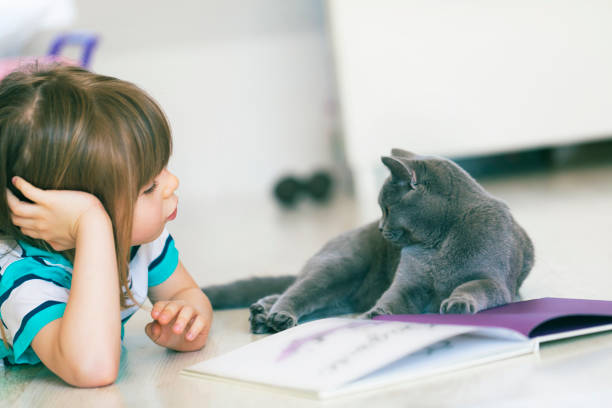
How To Describe A Cat In A Story (10 Best Ways)
In the symphony of storytelling, few characters elicit as much charm and mystique as the feline protagonist. Describing a cat in a story is an artful endeavor that transcends mere physical depictions; it’s an exploration into the subtle nuances of whiskered personalities, enigmatic gazes, and the unspoken dialogues that unfold within the bounds of fur and whiskers.
In this guide, we embark on a literary journey to unravel the secrets of crafting evocative and enchanting descriptions for our feline companions.
From the delicate details of fur and color to the subtle language of whiskers, we delve into the intricate dance of character-building and atmosphere crafting.
Join me as we navigate the labyrinth of words to capture the essence of these enigmatic creatures, turning each description into a brushstroke that paints the canvas of our stories with whiskered magic.
Welcome to the art and craft of describing a cat in a story—a pursuit where every stroke of the pen brings us closer to unveiling the captivating allure of our feline protagonists.
Table of Contents
How To Describe A Cat In A Story
Certainly! Here’s a step-by-step process on how to describe a cat in a story:
Observation
Begin by observing the cat closely. Take note of its physical appearance, including its size, color, and markings. Pay attention to details such as fur length, pattern, and any distinctive features.
Behavioral Traits
Observe the cat’s behavior. Does it move gracefully or with a playful demeanor? Is it shy, curious, or assertive? Note any unique habits or actions that make the cat stand out.
Personification
Consider giving the cat human-like qualities to make it more relatable to readers. For example, describe its expressions as if it were expressing emotions or thoughts.
Sensory Details
Appeal to the reader’s senses by describing how the cat feels to touch, any specific scents associated with it, and the sounds it makes. This adds depth to the character and helps readers connect with the cat on a sensory level.
Comparisons and Metaphors
Use comparisons and metaphors to create vivid imagery. For instance, you might describe the cat’s eyes as gleaming like emeralds or its fur as soft as silk. This adds richness to your descriptions.
Consider adding a bit of backstory to the cat. Where did it come from? Is there anything unusual or interesting about its history? This can add layers to the character and create intrigue.
Relationships
If the cat interacts with other characters or elements in the story , describe these interactions. How does the cat behave around certain people or in specific situations? This can reveal more about its personality.
Explore whether the cat holds any symbolic significance in the story. Cats are often associated with mystery, independence, or magic. Consider how these symbolic elements can enhance the overall narrative.
Dialogue (if applicable)
If the cat “speaks” in the story or has a particular way of communicating, capture its voice. Whether it’s through purring, meowing, or other non-verbal cues, convey the cat’s expressions through dialogue.
Consistency
Ensure consistency in your descriptions. If the cat undergoes changes or developments throughout the story, reflect these in your descriptions to maintain coherence.
By following these steps , you can create a well-rounded and engaging description of a cat in your story.
Understanding Your Cat Character
In the enigmatic realm of storytelling, unlocking the secrets of your feline protagonist transcends mere pen strokes; it’s a venture into the shadows of whiskered mysteries and untold tales.
Behind those bewitching eyes lies a character waiting to be deciphered, a canvas painted with the hues of untamed histories and unspoken meows.
Every cat, from the streetwise alley prowler to the regal house dweller, possesses a saga whispered through the rustle of fur and the arch of a tail.
Venture deep into the catacombs of your cat character’s past, unearthing the treasures of their peculiar quirks, peculiarities, and pulsating purrsonality, for it is within these cryptic revelations that the magic of understanding transforms into an art, casting a spell that enchants readers and leaves an indelible paw print on the tapestry of your narrative.
Developing a backstory for the cat
Embarking on the journey of developing a backstory for your feline protagonist is akin to excavating buried treasures in the fertile soil of creativity.
Each whisker, every nuanced twitch of the tail, becomes a breadcrumb leading to the heart of your cat character’s past.
Unraveling the enigma of their origins, from the forgotten alleys to the plush cushions of domesticity, imparts a unique depth to their persona.
Delve into the lore of their kittenhood, the feline rites of passage, and the encounters that left indelible marks on their proverbial nine lives.
Unearth the echoes of distant purrs, the soft imprint of tiny paws, and the shadowy figures that shaped their destiny.
In the symphony of storytelling, the cat’s backstory becomes the overture, setting the stage for a mesmerizing narrative performance that captivates readers and transforms your cat character into a creature not only of the present but also of the captivating past.
Identifying the cat’s role in the story
Within the intricate tapestry of storytelling, identifying the cat’s role is akin to deciphering a celestial constellation—each gleaming star contributing to the narrative constellation.
Is the feline a mischievous trickster, dancing on the edges of chaos, or a wise sage, offering cryptic counsel with every languid stretch?
Perhaps they are the unassuming observer, silently witnessing the drama unfold, or the catalyst, setting the plot ablaze with a flick of their tail.
As you navigate the literary cosmos, discerning the cat’s role becomes a pivotal celestial navigation point, aligning their essence with the gravitational pull of the storyline.
It is within this cosmic alignment that the cat metamorphoses from a mere character to a celestial force, guiding the narrative on an enchanting journey through the starlit expanse of your imagination.
Physical Description
In the rich palette of storytelling, painting the physical description of your feline protagonist is like wielding a brush dipped in moonlight and whispers of ancient secrets.
Each tuft of fur becomes a stroke in the masterpiece, a testament to the tactile symphony that is their essence. Picture a canvas adorned with the regality of a midnight-black coat, its depths concealing mysteries only revealed under the soft glow of a streetlamp.
The texture, a tapestry of silken whispers that beckons fingertips to explore the enigmatic landscape. Stripes, spots, or swirls add chapters to their visual novel, narrating tales of ancestry and untamed spirits.
It’s more than a description; it’s a conjuration of living art, an invitation for readers to run their fingers through the fur of imagination and lose themselves in the hypnotic gaze of a character that transcends the boundaries between the tangible and the fantastical.
Fur and color
The fur and color of your feline protagonist weave a spellbinding narrative of their own, a chromatic sonnet resonating with the rhythm of their untamed soul.
Consider the luxuriant embrace of their coat, whether it’s a silken cascade of onyx shadows, a shimmering tapestry of calico dreams, or the burnished gold that catches the sunlight like a Midas touch.
Each strand is a lyric in the ballad of their existence, whispering tales of ancestral prowess or domestic elegance.
The hue, whether deep and mysterious or bright and playful, isn’t merely a visual palette; it’s a language, an expression of emotions painted across the canvas of their fur.
Dive into the symphony of fur and color, and let the vibrant notes of your feline protagonist’s appearance resonate through the pages, leaving readers enraptured by the kaleidoscopic beauty of their very essence.
Facial Features
In the novel of your narrative, the facial features of your feline luminary are the calligraphy of emotion, the inked expressions that dance between the strokes of curiosity, wisdom, and feline mischief.
Picture the eyes, twin galaxies of mystery reflecting the constellations of untold tales, their irises swirling with enigmatic depth.
The nose, a sculpted landmark in the topography of their countenance, holds the whispers of fleeting scents, connecting them to the olfactory tapestry of their world.
A mouth that curves in a conspiratorial smile or a disdainful sneer, revealing the unspoken dialogue between whiskers and whiskered.
These features aren’t merely physical; they are the map to the emotional landscape of your character, a topography waiting to be explored by readers.
Every twitch, every blink, etches a paragraph in the story of your feline protagonist, making their face a canvas where emotions paint the masterpiece of their narrative journey.
The eyes of your feline protagonist are portals to a universe of unspoken stories, gleaming orbs that hold the wisdom of ages and the enchantment of moonlit mysteries.
Whether they’re aglow with the luminosity of emerald green, the sapphire depths of the ocean, or the molten gold of ancient treasures, each gaze is a silent soliloquy echoing across the pages.
These eyes are not mere windows; they are constellations of emotions, twinkling with mischief, burning with intensity, or softening with the tender glow of affection.
In the symphony of storytelling, the eyes of your feline character compose a haunting melody, a wordless song that resonates with readers, inviting them to unravel the secrets hidden within the depths of those feline galaxies, where every blink is a punctuation mark in the epic tale of their existence.
Nose and mouth
The nose and mouth of your feline protagonist are a sculpted duet, a choreography of sensory exploration and unspoken communication.
The nose, a delicate prow navigating the invisible currents of scents, is the gateway to a world rich with olfactory tales.
Whether it twitches in curiosity or flares with disdain, it is a compass guiding your character through the aromatic labyrinth of their surroundings.
The mouth, a masterpiece of expression, curves in a silent symphony of emotions—a sly smirk, a contented purr, or a disdainful sneer.
Every whisker and whiskered expression etches a paragraph in the story, capturing the essence of their character.
Together, the nose and mouth become an eloquent discourse, weaving a narrative tapestry where the unsaid is as palpable as the words on the page, inviting readers to savor the nuances of your feline protagonist’s unspoken language.
Movements and Gestures
In the choreography of your narrative ballet, the movements and gestures of your feline protagonist are pirouettes of elegance, untamed leaps of mischief, and the rhythmic poetry of silent communication.
Picture the languid stretch, a sinuous dance that tells tales of contentment and feline languor, or the stealthy, stalking gait, a feline waltz that precedes the pounce into the unknown.
Each tail flick, a semaphore of emotions—curled with affection, bristling with annoyance—becomes a punctuation mark in the fluidity of their tale.
The ears, those radar dishes attuned to the symphony of their surroundings, pivot like sentinels in response to the unseen.
In the grand theater of storytelling, these movements are not mere actions; they are a kinetic language, a captivating ballet that enchants readers, inviting them to pirouette through the narrative alongside a character whose every gesture is a dance, a choreography of whiskered grace.
Gait and posture
The gait and posture of your feline protagonist are the very rhythm and melody that compose the symphony of their character.
Imagine the sleek grace of a confident saunter, a silent overture that whispers tales of self-assured poise and regality.
The slinking stride of a predator on the prowl, a balletic movement that paints the air with anticipation and mystery.
Posture, whether it’s a languid sprawl or a poised perch, becomes the visual punctuation of their emotional landscape.
The arch of the back, an expressive crescendo that mirrors their mood—arrogant, defensive, or comfortably at ease.
Every step is a footfall in the narrative dance, an intricate choreography that delineates the contours of their personality.
As readers follow the tracks left by your feline protagonist, the gait and posture become a silent, visual language, a dance of nuanced expression that enchants, captivates, and propels the narrative forward with each step.
Specific gestures and actions
Within the nuanced repertoire of your feline protagonist’s specific gestures and actions lies a lexicon of unspoken tales, a ballet of whiskered movements that choreograph the narrative with finesse.
Imagine the deliberate slow blink, a feline semaphore signaling trust and affection, a secret handshake shared between character and reader.
The gentle kneading of paws, a nostalgic echo of kittenhood and comfort, imprinted on the fabric of their being.
The flick of a tail, a semaphore of emotions—irritation, curiosity, or simmering excitement—becomes a visual symphony that resonates through the pages.
Each acrobatic leap, whether it be a daring jump to higher realms or a calculated descent to stealthy reconnaissance, is a punctuation mark punctuating the sentences of their adventures.
These specific gestures and actions are more than mere movements; they are the silent dialogue, the choreographed ballet, that makes your feline protagonist a character whose every whiskered flourish adds a layer of enchantment to the unfolding narrative.
Creating Atmosphere
In the ethereal dance of storytelling, creating the atmosphere surrounding your feline protagonist is akin to weaving threads of moonlight and whispers into the very fabric of your narrative cosmos.
Envision the cat, a mystical enigma traversing landscapes adorned with the soft hues of dusk or the shadowy intrigue of midnight.
The play of light and shadows cast by their fur becomes an ambient overture, setting the stage for tales that unfold in the interplay between the mundane and the magical.
Whether stalking the city’s alleys or basking in the warm glow of a sun-drenched window, the atmosphere enveloping your feline luminary is more than a backdrop; it’s a living, breathing entity that resonates with the pulsating heartbeat of their story.
Let the surroundings become a silent companion, a spectral accomplice that heightens the sensory experience, inviting readers to be not just spectators but participants in the atmospheric symphony of your literary world.
Incorporating the cat into the setting
To seamlessly incorporate your feline protagonist into the setting is to forge a harmonious duet between character and environment, where every pawprint resonates with the pulse of the narrative.
Picture the cat navigating the urban labyrinth, an agile silhouette blending with the cityscape’s concrete canyons or, alternatively, a regal presence reclining amidst the emerald tapestry of a sunlit garden.
The cat becomes more than a mere inhabitant; they are an intrinsic part of the landscape, leaving delicate imprints on the canvas of their surroundings.
Whether stalking the moonlit rooftops or nestled within the cozy nooks of a home, the setting isn’t a passive backdrop but a dynamic partner in the unfolding story.
As you marry the feline essence with the ambiance, the result is a symbiotic dance where character and setting become inseparable, casting a spell that enchants readers and immerses them in the rich tapestry of your literary world.
Emotional Connection
In the alchemy of storytelling, forging an emotional connection with your feline protagonist transcends the written word—it’s a heart-to-whisker rapport that resonates in the quiet spaces between paragraphs.
Picture the reader tracing the soft contours of the cat’s fur with their imagination, feeling the delicate thrum of a purr reverberate through the narrative.
These whiskered sorcerers of emotions become conduits to a universal wellspring, tapping into shared experiences of joy, heartache, and the ineffable magic that lies in the companionship of a four-legged confidante.
Each twitch of the tail, every soulful gaze, forms an unspoken dialogue that weaves an invisible thread, binding reader and character in a tapestry of mutual understanding.
As the story unfolds, this emotional connection isn’t just witnessed; it’s experienced—an enchantment that transcends the pages and transforms the act of reading into a shared journey with a feline luminary whose presence is felt long after the final chapter.
Evoking empathy for the cat character
In the alchemy of storytelling, evoking empathy for your feline protagonist is an artful dance between words and hearts.
Immerse readers in the intricate world of your cat character, where each pawprint echoes the rhythm of vulnerability and resilience.
Share the whispered secrets of their past, the flickers of uncertainty in their gaze, and the tender moments that unravel the layers of their soul.
Let readers feel the gentle brush of whiskers against their own emotions, and in doing so, create a kinship that transcends the boundaries of the page.
Make vulnerability a tapestry, woven with the threads of shared experiences, turning the reader into a compassionate witness, a confidante to the unspoken chapters of your feline luminary.
As readers navigate the labyrinth of emotions alongside your cat character, empathy becomes not just a sentiment but a bridge that connects hearts across the realms of fiction and reality.
Dialogue and Interactions
In the polyphony of storytelling, the dialogue and interactions of your feline luminary are a symphonic ballet where every meow, purr, and whisker-twitch is a note that resonates with the reader’s soul.
Picture the cat’s voice—an elusive melody that carries the echoes of untold stories, flavored with the cadence of feline wisdom.
Their interactions, whether a playful game with a feathered adversary or a languid stretch in the sun-drenched corner, become choreographed movements in the dance of their narrative existence.
Each dialogue, infused with a unique linguistic tapestry, is an invitation for readers to eavesdrop on the enigmatic conversations unfolding between whiskered protagonist and the world.
The feline becomes not merely a character but a charismatic orator, delivering lines that are more than words—they are a portal into the whimsical and profound, an entrancing dialogue that transforms readers into enchanted spectators in the theater of your storytelling.
Giving the cat a distinct voice
Giving your feline protagonist a distinct voice is like capturing the elusive melody of a cat’s purr and translating it into a linguistic symphony.
Imagine the cadence of their meows—each utterance a linguistic brushstroke, painting the air with the soft nuances of their feline dialect.
Whether their discourse is a mischievous trill, a dignified yowl, or a velvety purr of contentment, the cat’s voice becomes a vibrant character within the narrative, a unique linguistic signature that resonates with authenticity.
It’s not just about the words spoken; it’s about infusing their voice with the echoes of their personality, the idiosyncrasies that make them distinctly felid.
As readers immerse themselves in the verbal repertoire of your feline luminary, they don’t just hear words; they decipher the subtle language of whiskered charm and untamed eloquence, making the cat not just a character but a captivating orator in the grand narrative of your storytelling.
Interactions with other characters
In the intricate tapestry of your narrative, the interactions of your feline luminary with other characters are the delicate threads that weave bonds, alliances, and occasional discord.
Picture the cat as a silent diplomat, communicating in the language of subtle nudges, flicks of the tail, and the grace of their presence.
Whether forging an alliance with a compassionate human or engaging in a playful dance with a fellow feline companion, the interactions become a dynamic dialogue, revealing layers of the cat’s persona and influencing the narrative’s ebb and flow.
These encounters are more than mere plot points; they are moments of connection that resonate with authenticity, adding depth to the relationships that blossom in the fur-and-whisker-filled tapestry of your storytelling.
As readers witness these interactions, they become participants in the feline diplomacy, forging emotional connections that enrich the narrative with every pawstep.
Revising and Refining
Revising and refining your narrative is akin to sculpting moonlight with a feathered pen—a delicate yet transformative dance that turns words into constellations.
Each revision is a brushstroke, refining the contours of your feline luminary until they shimmer with narrative brilliance.
Seek the counsel of beta readers and writing companions, those cosmic critics who orbit the story’s universe, offering invaluable perspectives.
It’s an iterative process, a celestial waltz between author and manuscript, where feedback becomes stardust, settling upon the narrative canvas, creating a celestial masterpiece.
Balance becomes the constellation, ensuring that the cat’s essence remains the guiding North Star without overshadowing the broader narrative.
As you refine, polish, and elevate, the story metamorphoses into a literary galaxy where every word, every pause, contributes to a cosmic symphony, enchanting readers and leaving an indelible trail of celestial brilliance.
Seeking feedback on cat descriptions
Embarking on the journey of seeking feedback for your cat descriptions is akin to unveiling a treasure map and inviting fellow explorers to chart the uncharted territories of your feline protagonist’s essence.
Enlist the insights of beta readers and fellow writers as celestial navigators, guiding you through the constellations of vivid imagery and whiskered nuances.
Their perspectives become compass points, steering the narrative ship towards uncharted storytelling brilliance.
With each critique and suggestion, the cat’s description becomes a dynamic landscape, enriched and refined by the collective gaze of those who traverse alongside you in the literary cosmos.
Embrace the collaborative odyssey, for in the shared exploration of your whiskered luminary’s portrayal, you cultivate a narrative garden where feedback blossoms into a kaleidoscopic bouquet, enhancing the sensory tapestry that captivates and resonates with readers.
Frequently Asked Questions about How To Describe A Cat In A Story
Why is it important to describe a cat in a story.
Describing a cat in a story adds depth and richness to the narrative, creating a more vivid and engaging experience for readers. It helps establish the cat as a distinct character with its own personality, contributing to the overall atmosphere of the story.
What details should I focus on when describing a cat’s physical appearance?
Pay attention to size, color, markings, fur length, and any unique features. Consider using descriptive language to capture the cat’s visual appeal, making it memorable to readers.
How do I make the cat relatable to readers?
Humanize the cat by attributing human-like qualities, emotions, or thoughts to its behavior. This personification helps readers connect with the cat on a more emotional level.
Can I use metaphors and comparisons when describing a cat?
Absolutely! Metaphors and comparisons, such as likening the cat’s eyes to jewels or its fur to a specific texture, can create vivid imagery and enhance the overall description.
Should I consider the cat’s backstory in my description?
Yes, incorporating a bit of the cat’s backstory adds depth to its character. Consider its origin, history, or any unique experiences that shape its personality within the context of the story .
How can I appeal to the reader’s senses when describing a cat?
Describe how the cat feels to touch, any associated scents, and the sounds it makes. Engaging the reader’s senses creates a more immersive experience, making the cat’s presence more palpable.
Can I use the cat symbolically in my story?
Absolutely! Cats often carry symbolic significance, representing mystery, independence, or magic. Consider how incorporating these symbols can enhance the thematic elements of your narrative.
Is it necessary to describe the cat’s interactions with other characters?
Describing the cat’s interactions provides insight into its personality and dynamics within the story. Explore how the cat behaves around different characters or in various situations to reveal more about its character.
Should I give the cat a unique voice or form of communication?
If the cat “speaks” in the story, use a distinctive voice or convey its expressions through non-verbal cues like purring or meowing. This adds authenticity to the character’s communication style.
How do I maintain consistency in describing the cat throughout the story?
Keep track of the cat’s characteristics, behaviors, and any changes it undergoes. Consistent descriptions ensure that the cat remains a cohesive and believable character in the narrative.
In conclusion, describing a cat in a story is an art that goes beyond mere physical attributes. By meticulously observing the cat’s appearance, behavior, and interactions, a writer can craft a character that resonates with readers.
Infusing the feline character with human-like qualities, employing vivid metaphors, and considering its backstory contribute to a more compelling narrative.
Engaging the reader’s senses through detailed descriptions of touch, scent, and sound creates a richer, immersive experience.
Moreover, the strategic use of symbolism and exploration of the cat’s relationships within the story can add layers of meaning and depth.
Consistency in portraying the cat ensures a coherent and believable character arc. Ultimately, the art of describing a cat in a story lies in the careful balance of details, imagination, and empathy, transforming the cat from a mere pet to a captivating and integral part of the storytelling tapestry.
Related Posts:
- How To Write Masochistic Characters (10 Important Tips)
- How To Describe A Dress In Writing (10 Best Tips)
- How To Describe Night In Writing (10 Best Ways)
- How To Describe A Face In Writing (10 Significant Steps)
- How To Describe A Dog In Writing (12 Important Steps)
- How To Describe A Sunset In Writing (Words, Phrases…
Similar Posts

How To Write Simultaneous Scenes (13 Best Ways)
In the world of storytelling, there exists a powerful technique that allows writers to breathe life into their narratives like never before. It’s a narrative tightrope walk, a dynamic dance of words, and a captivating literary feat that can mesmerize readers and elevate a story to new heights. We are talking about “Simultaneous Scenes,” a…
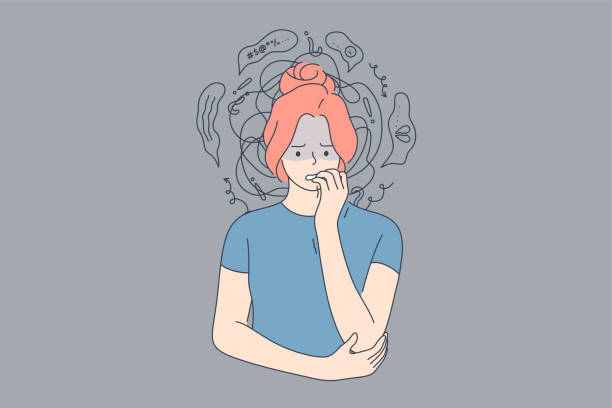
How To Describe Nervousness In Writing (13 Best Ways)
Describing nervousness in writing is akin to wielding a masterful brush on the canvas of human emotions. It is the art of capturing that visceral and universal sensation with words, allowing readers to not only witness but truly feel the trembling heartbeats, the sweaty palms, and the racing thoughts that define this complex emotional state….

How To Write A Southern Accent (10 Best Tips)
Welcome to the enchanting realm of Southern accents, where the cadence of speech dances like fireflies on a summer night and every drawl carries the weight of history and hospitality. Crafting a Southern accent in writing is akin to capturing the essence of a cultural symphony, blending linguistic melody with regional authenticity. In this guide,…
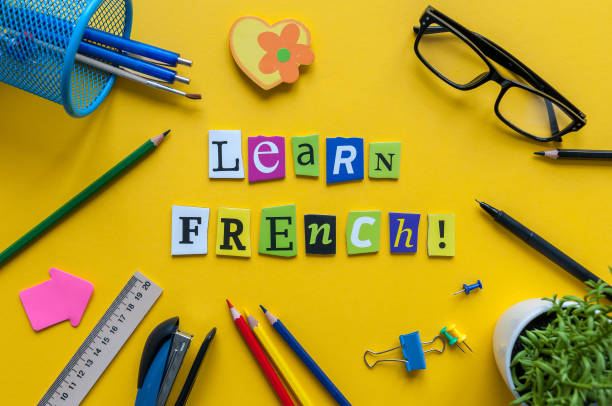
How To Write A French Accent (10 Important Steps You Need To Know)
Embarking on the journey of learning how to write a French accent is an enchanting exploration into the art of linguistic expression. Beyond the spoken cadence, capturing the essence of a French accent in writing involves a delicate dance with words, punctuation, and the nuanced beauty of phonetics. In this endeavor, we delve into the…
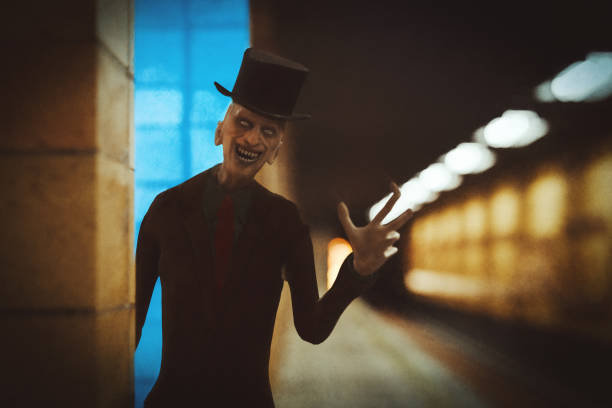
How To Write A Vampire Character (10 Best Tips)
Embark on a moonlit journey into the realms of creativity as we unveil the secrets of crafting a vampire character that transcends the clichés and breathes fresh life into the supernatural narrative. In this exploration of the macabre and the mysterious, we will delve into the cryptic lore of vampires, disentangle the threads of timeless…

How To Describe Being Cold In Writing (11 Best Ways)
Introducing the art of describing the sensation of cold in writing is an exploration of the literary palette, where words transform into winter’s breath and emotions crystallize into frosty landscapes. In the world of storytelling, mastering the art of conveying the palpable chill of a frigid day or the bone-deep shivers of a character is…
Search for creative inspiration
19,890 quotes, descriptions and writing prompts, 4,964 themes
Cats - quotes and descriptions to inspire creative writing
- a childhood pet
- a mother cat
- feline soul
The cats had fur of buttermilk and moved through the spring light as if were their own special kind of water.
Calico cats flowed through the brindled twilight.
Cats adorned the wall, absorbing both the sun-heat of the rocks and the verdant moss cushions.
The cats wove themselves into the long grass as if they were strands of a golden-green daydream.
The cats were wonderful at bringing their fur to a sleek shine, their self confidence and prideful glow being a vital part of such feline beauty.
The cats, after exerting themselves in the dawn hunt, each found a place of optimal comfort and warmth. Once settled they washed, meticulous and meditative in every aspect. It was their zen moment, self-soothing, then they slept as masters of the hearty dream world.
The cats moved in the twilight as knight and horse combined, the galloping feet and the hands upon invisible reins. For cats are this way, masters of their own destiny and riding upon none.
No mechanics of man have the shock absorbing power of the cat in stealth mode.
Sign in or sign up for Descriptionar i
Sign up for descriptionar i, recover your descriptionar i password.
Keep track of your favorite writers on Descriptionari
We won't spam your account. Set your permissions during sign up or at any time afterward.
You are using an outdated browser. Please upgrade your browser or activate Google Chrome Frame to improve your experience.
Begin typing your search above and press return to search. Press Esc to cancel.
The Graduate Blog, Columbia College Chicago

Cats and the Creative Writing Process

This cat is either very angry or very bored. Either way, it doesn’t say much about my writing.
You know who has no compassion for creative writing? Cats. Cats will hinder you at every step of the process. Many people keep cats as companions, or to catch mice, or to spot the ghosts in the house that are invisible to human eyes. But don’t fool yourself: a cat’s biggest job is to ruin your writing.
It doesn’t matter how you write. If you prefer, as I do, to write a first draft on a notepad with carefully sharpened number two pencils, then the cat will decide there is nothing better to chew on in all the world than those pencils. I’ve tried it myself and don’t understand the allure.
Prefer to write with a ballpoint pen, furiously scribbling your greatest sentences into your journal? Rest assured your cat will assume it is the proper time to recall her predatory instincts and attack the pen as it flits about like a wounded bird.
Of course, for cats, the greatest invention of all time is the laptop. No matter where you are sitting in your residence, and no matter how crucial a moment you are at in your manuscript, your cat will traipse right over. I have tried hiding in my attic to pound away at several precious sentences but still my cat arrives on the scene. It’s not affection or cuddling she’s after. She merely wants the warmth emitting from the 11.1 volts of the battery. If getting there means erasing my life’s work, so be it.

Do not attempt to put alphabetic text onto my heating pad!
Whenever I bring up this topic during a lull in conversation at a swank dinner party, everyone comes to the defense of the cats. No one sticks up for the writers, who are called rude, selfish and devoid of empathy. Cats, on the other hand, are regal! Cats are inspirational! Cats can purr but all you do is complain!
One woman I know, a fiction writer with the initials JH, went so far as to tell me her cat, Moxie, is her editor.
“If Moxie is looking at the screen, I know my work is good. But if she’s cleaning herself, coughing up a hairball, or staring at me in an unnerving way, I know I might just as well start over.”
I don’t doubt Moxie is a good editor. She can, after all, see the forest for the trees I’m told. But if Moxie has that kind of agency then so must each member of her species. Cats know what they’re doing; it’s willful obstinance and a subversion of the creative process. Cats do not feel writing is necessary to the enrichment of life.

Moxie expresses her indifference at the day’s toiling.
In carrying on with this argument, individuals will further dispute my claims by citing perhaps the most cat-friendly writer in history.
“What about Ernest Hemingway?” they will say. “He had hundreds of cats and look what happened to him!”
Yes, look what happened to him. And I don’t mean that chilly July day in Idaho, 1962. Hemingway went through four wives, at least three of whom would not hold him up as the paradigm of success. He was known for his terse, economical style. He had to work fast and lean, you see, because his many polydactyl cats were always coming to destroy his work.
I’d love to go on, but I have to submit this immediately. My cat just came in the room.
- Skip to main content
- Skip to primary sidebar
EveryWriter
A New Community of Writers
50 Cat Poem Writing Prompts
November 18, 2023 by Richard 2 Comments
Our fascination with cats is nothing new – felines have been muses to poets for over a millennium. The playful Pangur Bán was penned in the 9th century, and was unlikely the only cat poem of its time. Throughout history, poets and writers have been drawn to the mystique and charm of the cat.
In the 19th century, Emily Dickinson was inspired to pick up her pen after observing neighborhood cats out her window. She captured their cunning and grace through vivid imagery and slant rhyme. Later, Carl Sandburg transformed fog into a creeping, crouching cat with clever wordplay and metaphor.
Perhaps no poet was more beguiled by cats than T.S. Eliot. He penned an entire book of lighthearted verses about fanciful felines. Old Possum’s Book of Practical Cats was later adapted into the wildly popular musical Cats. Through his droll poems like Macavity and Mr. Mistoffelees, Eliot elevated the ordinary housecat to magical heights.
From medieval Ireland to modern Broadway, cats have been immortalized in poetry for their humor, stealth, wit and mystery. Their nine lives and night-owl adventures captivate our imaginations. Whether you want to capture a cat’s inherent mischief or write an ode to your own familiar, felines remain a perennial source of poetic inspiration.
We hope these 50 Cat Poem Writing Prompts will encourage you to take part in history and write your own cat centered verse.
- A kitten’s first wobbly steps across the floor, paws slipping and sliding as it learns to walk.
- The soft purr of a sleeping kitten, curled up in a fuzzy ball of warmth and comfort.
- A playful cat, stalking and pouncing after a toy mouse, kinetic energy bursting with each leap.
- A calico cat sitting proudly in a sunbeam, fur glowing in shades of orange, black and white.
- The rhythmic kneading of a cat making biscuits, paws alternately pressing into a soft blanket.
- A pair of curious kittens tumbling together, batting paws and nipping ears as they play and wrestle.
- The musical trilling of a cat greeting its beloved human, eyes bright with affection.
- A cat lazily grooming itself, pink tongue smoothing down ruffled fur over and over.
- The soft jingle of a bell on a cat’s collar as it explores outside, tail held high.
- A mischievous cat nudging objects off tables and counters, watching them fall with smug delight.
- The acrobatic leaps and bounds of a cat chasing a laser pointer, determined to catch the elusive red dot.
- A mother cat tenderly bathing her nursing kittens, rough tongue soothing and comforting.
- The comforting rumble of a cat’s purr, a soft lullaby easing worried minds and fretful hearts.
- A cat stretching luxuriously after a nap, back arched and paws extended as it loosens up.
- The crinkle of a cat’s nose when smelling something intriguing, nostrils flaring to analyze the scent.
- A cat nestled cozily in a cardboard box, making a cozy little home out of everyday objects.
- The soft crunch of kibble as a cat enjoys a meal, chewing contentedly on crunchy bites.
- A cat hiding in a paper bag or empty box, eyes peering out mysteriously from its makeshift lair.
- The acrobatics of a cat leaping to catch a tossed toy, twisting and turning midair with nimble grace.
- A cat pestering its owner for food or attention, meowing insistently and getting underfoot.
- Cats cuddled up together, bonded by warmth and companionship into a pile of entwined fur.
- The crinkle of a cat’s ears turning to listen intently to a new sound, alert and attentive.
- A cat sitting in a window, gazing intently at birds and squirrels frolicking outside.
- The soft tinkle of a cat’s collar belled with a tiny bell, announcing kitty’s movements.
- A cat greeting the dawn with loud meows demanding breakfast, restless for its morning meal.
- Kittens tumbling together in a playful kitty pile, tiny tails waving as they wrestle and pounce.
- A cat perched regally on a high wall or fence, calmly surveying its domain below.
- The rhythmic swish of a cat’s tail as it stalks prey, eyes focused and muscles tensed.
- A tuxedo cat dressed in black and white fur, prim and proper as a butler.
- Glowing cat eyes flashing in the darkness, tiny moons orbiting through the night.
- The satisfied snores of a sleeping cat, paws twitching as it dreams of mice and adventure.
- A mischievous cat pushing objects off counters and shelves, delighted by noises and chaos.
- A fluffy Persian cat gloriously groomed, fur puffed to perfection like a pampered poofball.
- The musical trill of a cat chattering excitedly at birds outside the window.
- A cat lounging lazily in a sunbeam, dozing blissfully in the warmth.
- The pitter-patter of little kitten feet racing and skidding across the floor.
- A cat rubbing affectionately against its owner’s leg, marking them with scent glands.
- The jingle jangle of tiny bells on kitty’s collar as it stalks and pounces.
- A cat greeting its owner at the door with eager meows, tail held high in delight.
- The soft scritch scritch scritch of claws on a scratching post, keeping kitty’s claws trim.
- A cat batting and bunny-kicking its toy mouse, practicing hunting skills.
- The musical melody of a cat’s purr, a soothing, thrumming lullaby.
- A calico cat lounging in the sun, fur aglow in patches of orange, black and white.
- A fluffy ragdoll cat gone limp in its owner’s arms, fully relaxed in trust.
- The pitter-patter tippy-taps of an energetic kitten exploring its world.
- A cat rubbing up against table legs and chairs, leaving scent marks on its territory.
- The joyful leap and snag of a cat playing with a catnip mouse or feathery toy.
- A sleepy kitten snuggling into its litter-mates in a pile, keeping each other warm.
- The flip-flop swish of a cat’s tail when focused intently on a noise or movement.
- Purrs of contentment from a cat in its owner’s lap, bonded in mutual love and trust.
If you write a poem from these we’d love to read it. You can submit it to us for consideration at [email protected] or you can post it in the comments below. If these were inspirational, we have many more writing prompts on our site .
Related Posts:

About Richard
Richard Everywriter (pen name) has worked for literary magazines and literary websites for the last 25 years. He holds degrees in Writing, Journalism, Technology and Education. Richard has headed many writing workshops and courses, and he has taught writing and literature for the last 20 years.
In writing and publishing he has worked with independent, small, medium and large publishers for years connecting publishers to authors. He has also worked as a journalist and editor in both magazine, newspaper and trade publications as well as in the medical publishing industry. Follow him on Twitter, and check out our Submissions page .
Reader Interactions
waffle says
November 20, 2023 at 2:03 am
Play word games for free at waffle game. You will have comfortable moments with friends and family. Moments of relief after tiring work
age of war game says
January 21, 2024 at 8:57 pm
Article is very well written. It will help everyone who uses it, including myself. Keep doing what you’re doing—I’ll definitely read more of your posts
Leave a Reply Cancel reply
Your email address will not be published. Required fields are marked *
Save my name, email, and website in this browser for the next time I comment.
Privacy Overview
Overland literary journal
- The Journal

253 Summer 2023/4
Dženana Vucic on the subtle and not-so-subtle Marxist symbolism in Sailor Moon, John Docker, a "non-theatre person" by his own admission on The New Theatre, Sarah Schwartz on prison healthcare as punishment and the killing of Veronica Nelson, a poignant short story on memory and displacement from Nasrin Mahoutchi-Hosaini, Jeanine Leane's prize-winning poem, "Water under the bridge", and more.
Browse by format:
- Browse by Theme
- Browse by Author
How to write a cat
Lewis Carroll’s Cheshire Cat in Alice in Wonderland continues the theme of a certain sinisterness (is a pattern emerging here?) or, at least, an ambiguous nature. The cat ‘looks good-natured,’ as Alice thinks when she first encounters it. But it has ‘ very long claws and a great many teeth, so she felt that it ought to be treated with respect.’
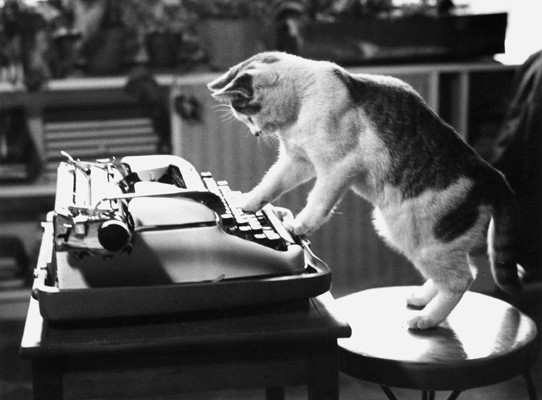
1. Behemoth

Woland and his entourage proceed to wreak havoc on Moscow’s intelligentsia and social elite. In one of my favourite scenes, Behemoth goes to the luxuriously appointed Writer’s Club with his demonic companion Koroviev. They have a short dispute with the door bitch, who demands their membership card:
‘But look here – if you wanted to make sure that Dostoevsky was a writer, would you really ask for his membership card? … I don’t suppose he ever had a membership card, anyway! What do you think?’ said Koroviev, turning to the cat. ‘I’ll bet he never had one,’ replied the cat, putting the Primus on the table and wiping the sweat from its brow with its paw. ‘Dostoevsky’s dead!’ said the woman, although not very certainly. ‘I protest!’ said Behemoth warmly. ‘Dostoevsky is immortal!’
Naturally they weasel their way in and the club burns down after a series of unfortunate accidents. Behemoth escapes with a whole salmon and his primus stove. How can you resist a cat who is unashamedly evil and smokes a cigar?
2. The Cat in the Hat

‘I know some good games we could play,’ said the cat. ‘I know some new tricks,’ said the cat in the hat. ‘A lot of good tricks. I will show them to you. Your mother will not mind at all if I do.’
Obviously this isn’t going to turn out well. But this is a cat that, unlike every other cat I’ve met, tidies up after himself.
Also, clearly, a dreadful warning to mothers who don’t stay home all day.
3. The Cheshire Cat

It’s notable mostly for its ever-widening grin and for the way it continually vanishes and reappears, which cat owners will recognise as very feline behaviour. It grins, the Duchess tells Alice, because it’s a Cheshire Cat, and all cats grin anyway. (Probably when we’re not looking.) Certainly, like most characters in this book, the cat is not helpful when Alice tries to speak to it, but the cat has a certain unnerving courtesy:
‘I wish you wouldn’t keep appearing and vanishing so suddenly: you make one quite giddy.’ ‘All right,’ said the Cat; and this time it vanished quite slowly, beginning with the end of the tail, and ending with the grin, which remained some time after the rest of it had gone.

The book is discursive a manner akin to Laurence Sterne’s Tristram Shandy , and is quite likely modelled on it: Sōseki, who was educated in England, uses his conceit to satirise the westernisation of modern Japan. The cat records abstruse conversations between intellectuals discussing absurd or grotesque concepts, interspersed with observations from the cat-level view. A typical passage concerns the cat’s offence at his master’s lack of respect:
If he is taking my miaows for granted, indeed he presumes too far. Such failure to respect another person’s personality, a deadly insult to any cat, is the sort of crude insensitivity which one must expect from creatures like my master’s own particular pet aversion, the nauseous Mr Goldfield. But the same behaviour on the part of my master, a man so confident of his open-heartedness that he struts about stark-naked, can only be seen as an act of unwonted weakness.
I think we all suspect that cats are judging us. We can only be glad they don’t write books.
5. Jeoffrey

For I will consider my Cat Jeoffry. For he is the servant of the Living God, duly and daily serving him. For at the first glance of the glory of God in the East he worships in his way. For is this done by wreathing his body seven times round with elegant quickness. For then he leaps up to catch the musk, which is the blessing of God upon his prayer. For he rolls upon prank to work it in. For having done duty and received blessing he begins to consider himself. For this he performs in ten degrees. For first he looks upon his forepaws to see if they are clean. For secondly he kicks up behind to clear away there. For thirdly he works it upon stretch with the forepaws extended. For fourthly he sharpens his paws by wood. For fifthly he washes himself. For sixthly he rolls upon wash. For seventhly he fleas himself, that he may not be interrupted upon the beat. For eighthly he rubs himself against a post. For ninthly he looks up for his instructions. For tenthly he goes in quest of food. For having considered God and himself he will consider his neighbor. For if he meets another cat he will kiss her in kindness. For when he takes his prey he plays with it to give it a chance. For one mouse in seven escapes by his dallying. For when his day’s work is done his business more properly begins. For he keeps the Lord’s watch in the night against the adversary. For he counteracts the powers of darkness by his electrical skin and glaring eyes. For he counteracts the Devil, who is death, by brisking about the life.
‘Brisking about the life’. Yes!
Alison Croggon
Alison Croggon is a Melbourne writer whose work includes poetry, novels, opera libretti and criticism. Her work has won or been shortlisted for many awards. Her most recent book is New and Selected Poems 1991–2017 .
Overland is a not-for-profit magazine with a proud history of supporting writers, and publishing ideas and voices often excluded from other places.
If you like this piece, or support Overland ’s work in general, please subscribe or donate .
Related articles & Essays

Open letter: Statement of solidarity with Palestine and call to action from the University of Melbourne’s staff, students, and alumni
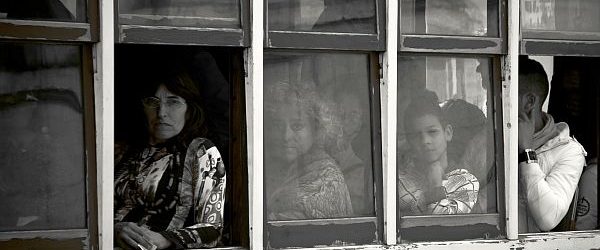
Which One Are You?
In 1974, canal-boating through Cheshire, we stopped to investigate various buildings, including churches. These typically had cat-head gargoyles with very broad grins; so we understood for the first time the phrase: it’s a Cheshire cat, and that’s why.
That is really interesting! I thought it was just the Duchess being the Duchess.
Excellent! And Wittgenstein, as I recall had some difficulty in writing a cat, claiming that in such an ordinary language statement as ‘There is a cat on my desk’, although the word ‘cat’ is composite and divisible through logical analysis, there is a lengthy process involved in working through language to the underlying logical syntax, so we never did find out about the cat on his desk – its paws, tail and whiskers etc. – their relation to the cat as a whole – and its relation to being on his desk. Not much of a story at all really. Maybe the cat was constipated – or he was – or both – or he made language constipated. Ergo, I prefer your writing a cat stories.
I love the cat in Irene Nemirovsky’s ‘Suite Francais’, a very catlike cat who, for example… “hesitated for a moment, then buried his muzzle in the ground. Now he was in the very black of night, at the heart of it, at the darkest point. He needed to sniff the earth: here, between the roots and the pebbles, were smells untainted by the scent of humans, smells that had yet to waft into the air and vanish. They were warm, secretive, eloquent. Alive. Each and every scent meant there was some small living creature, hiding, happy, edible…June bugs, field mice, crickets and that small toad whose voice seemed full of crystallised tears…” I also love the illustration of Behemoth above – any idea where it’s from?
This is my favourite picture of Behemoth. http://2.bp.blogspot.com/-xAV3U-IZgvY/TsUITRHXl8I/AAAAAAAAEhg/ofMvXr7yWZc/s1600/Behemoth-front-art1.jpg
That’s a full back tattoo right there, Jeff.
That would be the best!
So now ISIS recruiting videos show cats playing with their fighters, between the automatic weapons and large knives, as if there is nothing wrong, after dinner and their masters kindly people who love animals. Perhaps they are fed on a diet of chopped Kaffir. Certainly, they are not loyal to anything but themselves.
My favourite is still the magical Grimbold, in Nicholas Stuart Grey’s GRIMBOLD’S OTHER WORLD
I Just read in The Paris Review about a graphic novel by Simon Hanselmann that has a witch called Megg and her cat Mogg, both of whom are described as “druggy reprobates”.
I recall a wonderful essay by George Steiner on Louis-Ferdinand Céline. It begins by despairing that: ‘This review ought to be about a cat, the most illustrious, compelling cat in the history of literature.’ He writes affectingly about Bebert for a couple of hundred words before turning his attention to the biography he’d been given to review, but not before lamenting that ‘Bebert would be a joy to report on. Céline is not.’
soo funny lol
Mehitabel (of archy & mehitable fame) is probably my favourite lit cat. Derrida’s cat (which made him ashamed of his nakedness, etc) deserves a pat too.

Leave a Reply Cancel reply
You must be logged in to post a comment.
This site uses Akismet to reduce spam. Learn how your comment data is processed .
Overland ’s free fortnightly newsletter highlights the best of Overland online, new writing from the print journal, and regularly collates writing events and opportunities in the community.


14 Writing Prompts about Cats
Our four-legged furry feline friends, cats are a welcome member of many a household around the country, and the world!
With their quirky, and sometimes indifferent, ways, they certainly have their own idea of what a life well lived is.
Today we’ll take a look at cats and how they interact with we mere humans, and use these points as our writing inspiration.
Let’s dive in…
How could I use these?
Any of a hundred different ways!
For example, you might pick out a prompt at random, and write two pages on the topic.
Or, perhaps use them as inspiration for a creative writing session, and craft a short story exploring the topic.
Why not journal on one of the topics each day for one week, as a fun writing challenge.
The prompts:
- How are cats different to dogs in their attitude and behavior?
- Why do you think some ancient civilizations might have believed cats were special creatures to be treated differently to other animals?
- Why do you think some people get along with cats better than other pets like dogs?
- Why do lots of cats get big round eyes and large black pupils when you swish a stick through the grass near them?
- If you moved house with your cat to a forest full of rare native bird life, how would you stop it from hurting all the native birds?
- Have you ever seen a cat on a leash? How do you think the cats owner managed to convince the cat to go walkies?
- Would you prefer to have a hairless cat or a very long haired cat as a pet? Why?
- What is the perfect number of cats to have as pets in one household? Why?
- Where do you think the saying “cats have 9 lives” came from?
- What do cats have whiskers for? Explain and give examples of how they can come in handy.
- If you were to fit a GPS tracking collar to your cat, what do you think it would show you about it’s activity?
- Do you think a cat can help an elderly or unwell person to feel better? Why?
- What are the best ways to calm a cat you’ve just adopted from a shelter and brought home? Why?
- If you’ve been away several days on a trip, why do you think your cat might meow constantly when you return?
More here if you need them
Good news my friend – we have plenty more in the way of writing prompts and other free resources for you!
Maybe you’d like some more pet related writing prompts ? Or how about some prompts about birds ? But hey, why stop there? We’ve got thousands more for you, so don’t forget to bookmark our site right now, and check back soon for more! We are making more resources available most days.
Please take a few seconds to share this with others who would find it useful, thank you!
Yours, Matt & Hayley
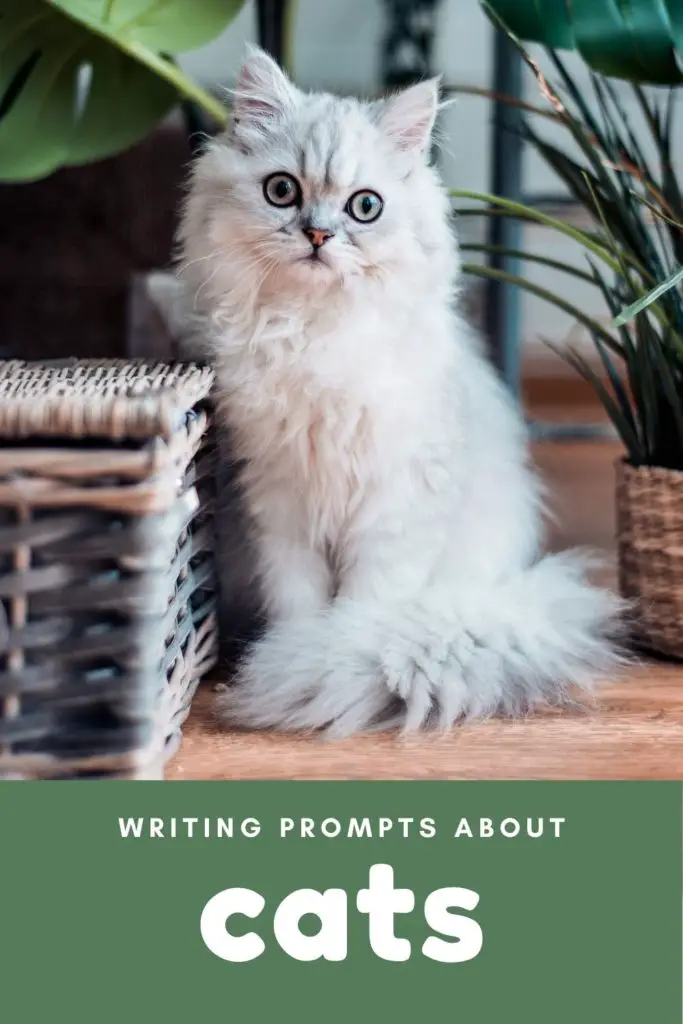
10 Writing Prompts—Written by Cats and a Dog
by Pamela Hodges | 34 comments
Want to Become a Published Author? In 100 Day Book, you’ll finish your book guaranteed. Learn more and sign up here.
Your writing brain has turned into a lump of frozen hamburger meat. The only way to thaw out your creativity is to write, and if you don't know what to write, here is a list of writing prompts . A gentle nudge towards getting words on the page.
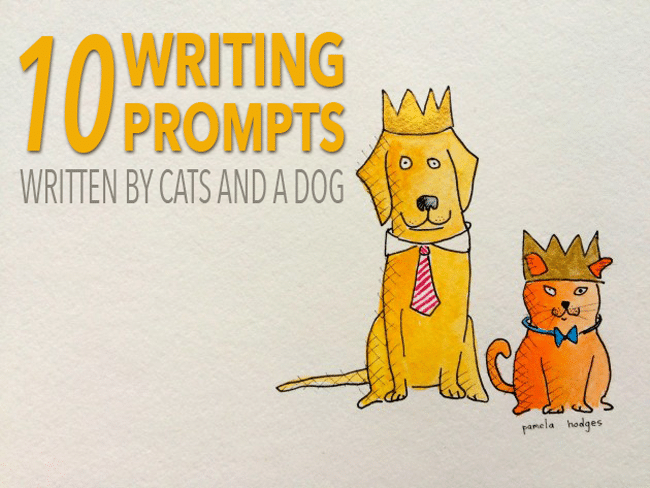
Writing prompts are always helpful.
My cats thought writing prompts about cats would be a good idea. The cats, Charlie, Nepeta, JR and Harper helped me write Ten Cat Writing Prompts.
Ten Cat Writing Prompts
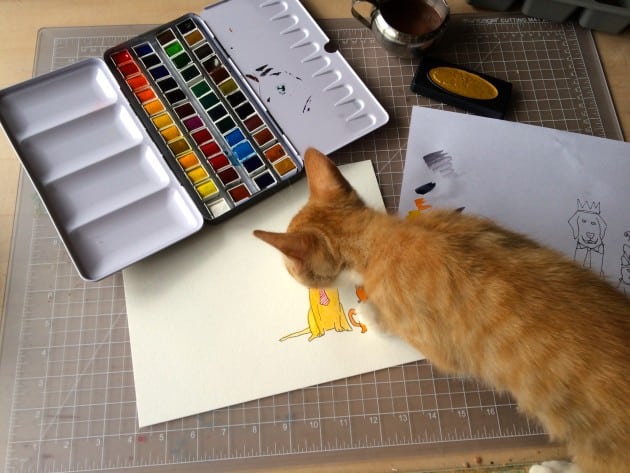
Harper the kitten helps with the illustration.
1. The cat scratched at the door. 2. There was no money to buy cat food. 3. The cat walked out the door when the wind blew the door open. 4. The cat thought she was a dog. 5. The cat met the Queen of England. 6. The dog admitted cats are better than dogs. 7. A dirty litter box. 8. The cat saved the baby's life. 9.The cat was an author and taught kittens how to read. 10. The cat jumped onto a speeding car.
My dog Martha just noticed the list of Cat Writing Prompts and wanted a list for dogs as well. Martha, the dog, helped me write these prompts.
Ten Dog Writing Prompts
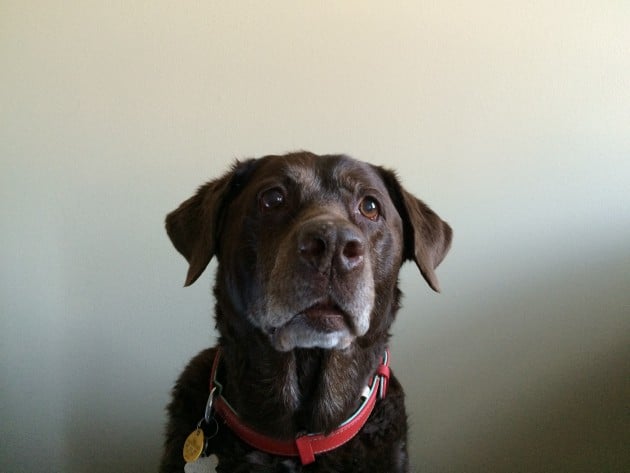
Martha wants to be a private detective.
1. The dog walked around the world. 2. The dog saved the baby from the speeding car. 3. The dog was served steak every day on a silk pillow. 4. The cat admitted dogs are better than cats. 5. The dog had a pedicure once a week at the beauty parlor. 6. The dog learned how to drive a car. 7. The dog spoke Japanese and worked for a Japanese bank. 8. The dog was a secret agent. 9. The dog was The Queen of England for a day. 10. The dog helped Santa deliver toys on Christmas Eve.
Martha wanted me to add one more prompt. The dog was allowed to sleep on the bed. But I told her not to get any ideas. She still has to sleep on the floor beside the bed.
What do you do when your brain is like a lump of frozen hamburger meat? What do you do when you don't have any story ideas? Do you get ideas from your cat or dog? Let us know in the comments section .
Please choose one of the writing prompts and write for fifteen minutes . Once I clean my seven litter boxes I will be read the story you wrote to my four cats, Charlie, Nepeta, JR, and Harper the kitten, but we call her Baby, and the two dogs Annie and Martha.
When you are finished, please post your practice in the comments section . I look forward to reading your stories.
xo Pamela, Charlie, Nepeta, JR, Harper, Annie and Martha

Join 100 Day Book
Enrollment closes May 14 at midnight!
Pamela Hodges
Pamela writes stories about art and creativity to help you become the artist you were meant to be. She would love to meet you at pamelahodges.com .
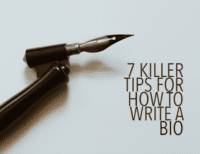
34 Comments
No comments? What about the aliens that captured all the cats and dogs? Now all we have is our pet monkeys, gerbils, mice, snakes, spiders, birds and fish. I like a pet monkey, he could probably do more than my dog could do anyways.
Thankfully the aliens did not capture my cats and dogs. Did they get your dog a Guy Who Types? Perhaps a pet monkey could help you with Writers Block? I wish the aliens had taken the spiders and snakes. Perhaps they will come back and we can give them to the aliens. xo Pamela
St. Patrick really was a Saint Bernard, and he filled the Anglia up with all the snakes there were, He got carefully in the front seat, started the engine, engaged the gear, slipped the clutch out and drove all the snakes clear out of Ireland.
Hello Bob Ranck, Did he take the snakes to The United States? I don’t like snakes, but I like cats. xo Love Martha
Hello A Guy Who Types, Would you please tell me what the aliens look like? I won’t let them in the house. Thank you for the warning. All my best, xo Love Martha
Awww…this is too cute…awww…I have never used writing prompts, but these might change my mind 😀 #Writing
Hello Krithaka, If you use one of Martha’s prompts, she is going to reply to you. Have you ever had your stories read by a dog? xo Pamela
All of the above posts are fantastic and amusing, created by the clever prompts of cats and Martha.
My dear Krithika, I have never been called cute. I assume you were referring to me? I hope you had a nice day. xo Love Martha
cat prompt #10, and dog prompt # 8… Next story. Ninja cat steals Air Dog One and flies it to Kitty Central. Secret agent Dog has to find, and capture Ninja cat plus, bring home Air Dog One. If secret agent Dog fails, Cats would take over and run the country instead of dogs. Cats would live in fancy houses and dogs would be forced into those tiny doghouses outside in the cold.
Hello my dear Susan Barker, As a secret agent dog, I can assure you I will not fail on my mission. However, it is your story, and you get to decide the ending. If the cats do take over the country, will you please put in a good word with the Cat leader, and allow dogs to live inside. Your choice of prompts is very exciting and dramatic. All my best. xo Love Martha
Martha’s #6 prompt;
I often took my Dog Matilda, whom we call Mattie, with me in the car.
She loved to jump into the back seat of my little 2 door sedan and as large as she is, she’d find a way of getting comfortable back there. Besides, she didn’t like to stay home alone. She never really told me that but the look in her eyes as I rubbed her head and chin on my way out the door conveyed the message.
On this particular day, I thought I would bring her with me as I was going to run some errands that didn’t require me to leave her in the car for an extended time. I opened the driver’s door and before I could pop the seat forward to allow her space to get in, she jumped onto the drivers’s seat and wouldn’t budge.
“Mattie.” I laughed at the sight of her sitting on her rear end with one paw resting on the bottom of the steering wheel, “get out”.
She turned her face to me and then quickly turned back staring out the front window.
“Are you nuts?” I spoke louder than intended but still thinking that this behavior was unusual as well as quite funny.
I pulled on her collar trying to encourage her to get out of my seat. I pushed on her butt trying to lift her between the front seats into the back. Matilda is a 75 pound Labrador and Hound Dog. She is about 5 or 6 years old. My husband and I got her from a woman who rescues dogs of all breeds. The minute we saw her, three years ago, we fell in love. Other than her barking at the mailman or any other man or woman who tries to deliver a package to our door, she is a gentle, well behaved, loving pooch.
After several attempts to either get her to move to the back or get out, I finally decided to call her bluff, and shut the door.
“Bye”, I called to her through the closed window.
Hello dgk, Thank you for choosing one of my prompts. I am so curious to know if Matilda drove away after you said, “Bye.” I loved how she turned her face to you when you told her to get out, and then she looked out the front window again. A fun story. xo Love Martha
Martha’s Number One prompt, which is rather appropriate:
Sugar opened one brown eye and rolled it toward the alarm clock. It was way past time to get up. If Mom didn’t wake up soon, drastic measures would have to be taken, including licking her face and toes. Today was the day they were going to set off together on a ‘walkabout’, a word Mom was using to describe them going outside and smelling things on all seven continents.
Sugar wasn’t too sure about this adventure, although normally she was up for anything. Around the world seemed like a long way to go just to pee on a few things. And it would be hot. And then cold. And then hot again. What if they couldn’t find something to eat? What if the new places they visited didn’t have can openers? What if the people they saw outside were suspicious looking, but there were too many of them to investigate properly? It’s hard to check the perimeters when there are no perimeters. Sugar took the job of perimeter checking very seriously, even though she hadn’t received a paycheck in like, forever.
In seconds, she was ready to set out. She was tricked out in little saddlebags, filled with chewies, Mr. Squeak, Liver Snaps, and a few cans of dog food. The leash could just stay at home, as far as she was concerned. Mom was taking a lot longer to get ready. Humans had so much more to pack.
Soon enough they were ready to go. Sugar sure hoped Mom could keep up with her. After all, Sugar had four-paw drive, and could bound up hills without even trying. Mom swung her backpack up over her shoulders, and remarked how heavy it was. And what was that clanking sound?
As they set out, Sugar looked longingly back at the ten cans of dog food and the can opener sitting forlornly on the front steps. She sure hoped they’d still be there when they got back.
Oh my Gigi J Wolf, Your Sugar sounds so brave and adventurous. Even though she was a bit hesitant at first, in a matter of seconds she was ready to go.
Humans have such a hard life. Deciding what shoes to wear, and they have to have clean clothes every day. Did you tell Sugar what the clanking sound was in your backpack? Telling the story from the dog’s perspective was very refreshing. I wish you all my best on your adventure. This is a true story, right? xo Love Martha
Dear Martha, As soon as Mom and I get to a place here in the Himalayas that has WiFi, I will Skype you. Mom sometimes lets me use the computer if I promise not to drool on it. She’s given up on the clean clothes thing; it’s not easy finding washing machines in some of these crazy places we’ve been. I miss my own sofa! Yours in adventure, Sugar
Sugar, Sugar, Sugar, I am so excited for you. I would love to Skype with you. And, clean clothes are overrated, it takes at least two weeks before clothes start to smell. If you are ever in Pennsylvania, I will share my rug with you. I don’t go on the sofa. What a fun adventure. p.s. What was the clanking sound in the backpack? xo Love Martha
This story made the dog seem very human, with the same things humans generally want. Which was interesting to me. I loved the last paragraph, it is super funny. I sit forlornly when there is a treat out of my step too.
The dog learned to drive the pickup? Never. The dog knows the best place to be is right in the middle of the pickup truck. Behind the wheel, you have to work, to stay alert, to drive, to yell at the dog when the dog sees a cat and barks. So no, behind the wheel is not the best place to be.
On the passengers side? Not really. Oh yeah it’s nice to stick your head out the window, until you get a bee in the face, and that ain’t fun at all. Besides, the guy sitting on the passengers side is expected to get out at each gate, open it, close it, and then get back in the truck. He also has to shout at the dog when the dog sees that blasted cat again, and barks. Again, all of that is work.
Nope, the best place to be is between the passenger and the driver, looking out the window for that stupid cat.
Hello Gary G Little, Your dog is very smart. A smart dog doesn’t want to open and close the gate. Or drive. Perhaps one day I can ride with the dog too. xo Love Martha
What a wonderful, light-hearted idea! I love it!
Believe it or not, some of those prompts fit perfectly with a series idea that’s been percolating since sometime around 2008 or 2009.
Can you say a dog and cat detective team. Perhaps I should consult with the contributors to this post for technical advice!
Thanks for cheering me up and reminding me of these two lurking characters.
Hello Carrie Lynn Lewis, I am delighted you liked our prompt ideas. Pamela was beside herself trying to think of what to write. So the cats and I helped her.
Your story ideas sounds so fun. Cats and dogs really can be friends. If you need any technical advice my email address is [email protected] .
I am glad our post cheered you up. And hello to your cat and dog detective team.
xo Love Martha
Thank you very much! I appreciate the offer. I may have to resurrect Thomas (cat) and Inky (black lab) and the case of the missing race horse. You’ve given me hope!
A cat and dog detective team sound like fun!
The Dog Was A Secret Agent
Yes, that’s right, a secret agent. We didn’t know this at the start of our relationship, but in those days, we – both the dog and I – took each other pretty much at face value. Yeah, I know, it’s not the way things are ordinarily done around here, but that’s the way we did it.
I was taking down the Christmas decorations from above the fireplace when Big Jimmie came barging into my place. Straight through the kitchen and round the corner, right into the parlor he stomped, with this dog under his arm like he was just bringing in the evening paper. Things didn’t look quite right from the start, because Big Jimmie had the dog wrong-end-around, the head and forepaws dangling from under his arm and the dog’s rump and hindlegs above his wrist. “Bugs!” he shouted. ‘Think quick!” and with that he tossed the dog directly at my head.
Bib Jimmie and I have known and tormented each other for thirty years, and this was nothing new. He did this once to me with a live, five pound river carp when we were teenagers fishing in the drainage canal. That time, I didn’t even try to catch it; I flailed, faltered, and fell backwards into the stinking water. I plotted revenge deliciously for a week, until something else happened.
The next time he did it, we were running from someone – cops, bailbondsman, irate women, I can’t remember now – but we were in the woods, it was late fall and cold as hell. I was bitching about the cold and he snatched up a blazing pine knot out of our small campfire and tossed THAT straight at my face, again muttering, “Think quick!” As improbable as it seemed, I caught the damned thing, but tripped and fell backward – again – over a tree root this time, and rolled with my face in the fiery pine knot. That’s how my left eyebrow got that funny, burned-off-at-the-end scar. Anyway, again I plotted revenge, but at night in the woods in the late fall in the upper part of this state, it generally gets too cold too quick to even think revenge, much less extract it.
But back to this dog. I caught the critter, deftly this time. In thirty years, Big Jimmie gave me a lot of practice. But I got my heel caught in the tinsel and fell on my kiester again, and wound up with the dog sitting on belly, and licking my face – probably trying to clean off the last smear of Goofy Ruby’s apple-tart that I was eating when Jimmie tossed the mutt.
See, that was the first clue that this was no ordinary dog – he wasn’t at all flapped by the toss, the catch, or the landing. He KNEW how to land. Cats got that by instinct, dogs gotta work at it and though a lot of ‘em do pretty good at it, this woofer did it like it was an ordinary thing. It was a result of training that I didn’t fully recognize or appreciate at first.
“Scuze me, pooch,” I said, directly in his face, as I tried to sit up and get disentangled from the tinsel and lights. It just then that I noticed he had on a black bow-tie. What the hell? On a dog, fer cryin’out loud.
“Get it straight, Bugs. His name’s Bond”, Big Jimmie said, looking down and laughing at me on the floor. “At least that’s what he wants to be called. He answers to that.”
Raising myself now on one elbow as the dog deftly stepped from my stomach to the floor, I asked the dog, “Bond, huh?”
The dog responded by nodding his head gently and offering his right forepaw. I took it and shook it, kind of gentleman-to-gentleman, and damned if the little fellow didn’t reply with an affirmative “Woof.”
Well, that settled it, Bond he was. I said, “OK, guy, I’m Bugs. I run this joint here and Goofy Ruby over there does the food thing,” pointing to my wife.
Bond turned in an instant, padded on over to where Ruby was laughing, still holding the other end of the lights and tinsel, and honest, this dog did a little bow, pulling that right forepaw under and ducking his front end and lowering his head way down, his nose almost touching the floor in front of her.
Oh my, Mr. Bob Ranck. You have totally brought Bond to life. And, Big Jimmie and Bugs have so much character all ready. I want to know more. May I meet Bond? Or is he only fictionalized? My, my, my. You made him so real. The only word I was not sure about was “keister.” Is that a form of sausage? Mr. Ranck. Do you always have so much fun writing? I hope to buy your book next year about Bond. It should take about a year, right? xo Love Martha
Thanks, Sandra. Glad you found it fun reading. It was the greatest of FUN writing it , too.
Martha, you are so kind. Bond does exist, at least in part, and in my own household, currently holding office as “Senior Dog”. Big Jimmie really did enter with him that way, upside down and toss him to me January 5, 2006. That exercise has set me on the path to a longer story about Bugs, Big Jimmie and Bond, in their endeavors to succeed in their own jobs, to find security in life, to always remain in the good graces of Goofy Ruby, and, in their own way, to fight crime.
Thank you for your gracious comments.
Martha, sorry I missed this. “KEISTER” is/was a word in fashion over half a century ago meaning duff,, bum, hind-end, back-side, rear, prat, tush. the sitting-down-parts. Probably derived from some german/jewish-New York slang, Don’t know the origin, but it was a common word when Bugs and Big Jimmie were growing up in the Philly area.
This was really fun reading.
2 minute writing sentences.
1. The cat scratched at the door. He left deep marks into the door. His hiss was contorted as the wind howled through leaves behind him. I would not let the cat in here though.
2. There was no money to buy cat food. Fred was angry I guess you could say. But it was more of a displeased look set with the expression of not caring about anything that always seemed to be there.
I patted him on the head when he slowly made his way to the food dish that morning, sorry not today, I have to keep the checking account balanced you see. Yowl… he said lazily and then let out a big yawn and then slowly made his way back to bed.
3. The cat walked out the door when the wind blew the door open. Blue and orange mottled streaks went through its fur. Its eyes like dark orange marbles shined in the midnight light. A strange wind seemed to only grow.
Oh my Sandra D, Your short sentences are full of drama, emotion, and suspense. “His hiss was contorted” “Slowly made his way, “blue and orange mottled streaks went through his fur. “as strange wind seemed to only grow.” A repeat on wind in the last sentence from the second sentence. I would really like to know more about this cat. And this person who wouldn’t buy food for the cat. Should I call the authorities, or is this a fiction story. I am concerned about the cat. Your writing really made me care. All my best, xo Love Martha
no I actually have no pets at all. Just an occasional meandering beetle makes its way across my back steps, and then I just hope that it will be able to forage independently. If I had a caring cuddly creature in my house, i probably wouldn’t have been able to write that sentence. So never fear! heh. But yes I wonder why he won’t buy food for his cat, and why his cat doesn’t care! I do wonder, but I don’t know either. Thanks for caring, these mythical pets do appreciate it.. Sandra
Hello Pam, Your cats’ and dog’s writing prompts are inspiring. I will decide on which title to develope into a story. There are ten to choose from and all of them provoke me. Meanwhile, here’s a poem for you. I hope you like it.
I said to my Minnie “Come over here, “Don’t worry, Minnie You need have no fear, You are the best kitty That I ever saw. Come, Minnie, Minnie, Give me your paw.” To get her to come I gave her some milk. I stroked her black coat It was smooth as soft silk When she had her fill She rolled on the floor, Without looking back She made straight for the door.
A big hug for you, the cats and Martha.
Oh, my dearest Lillian, This is the sweetest poem. Is this a true story? Do you really have the best kitty called Minnie? If you do, will you please post a picture here of Minnie? We have two black cats who live here. And a big hug for you from all of us, Me, Martha, Annie, the other dog, and the four cats, Charlie, Nepeta, JR, and Harper. Oh and Pamela sends you a hug too. xo Love Martha
Submit a Comment Cancel reply
Your email address will not be published. Required fields are marked *
Submit Comment
Join over 450,000 readers who are saying YES to practice. You’ll also get a free copy of our eBook 14 Prompts :
Popular Resources
Book Writing Tips & Guides Creativity & Inspiration Tips Writing Prompts Grammar & Vocab Resources Best Book Writing Software ProWritingAid Review Writing Teacher Resources Publisher Rocket Review Scrivener Review Gifts for Writers
Books By Our Writers

You've got it! Just us where to send your guide.
Enter your email to get our free 10-step guide to becoming a writer.
You've got it! Just us where to send your book.
Enter your first name and email to get our free book, 14 Prompts.
Want to Get Published?
Enter your email to get our free interactive checklist to writing and publishing a book.
Essays About Cats: Top 5 Examples Plus Prompts
Cats are some of the most beloved animals to humankind; this article contains writing prompts and essay examples to help you write essays about cats.
When you think of animals, two things come to mind: cats and dogs. Cats are some of the most popular pets, as they are, for the most part, relatively independent, low-maintenance, and easy to care for. The word “cat” most often describes domesticated house cats but also refers to some of the most vicious predators on the planet, such as lions, cheetahs, and leopards. Nevertheless, they make great companions for people who enjoy staying home and spending time sitting down and petting them, which reduces stress and anxiety.
If you want to start writing essays about cats, start by reading some essay examples.
For help with your essays, check out our round-up of the best essay checkers
1. Short Essay on “Cat” by Kirti Daga
2. life of stray cats by nathaniel bridges, 3. do cats understand mirrors by christine o’brien, 4. why cats are bad pets by shannon cain.
- 5. Why Are Cats So Incredibly Rude? by Julie Davidson
5 Writing Prompts For Essays About Cats
1. should you own a cat, 2. why are cats so loved, 3. my experience with cats, 4. cats vs. dogs, 5. my favorite breed of cat.
“If your cat has given birth to kittens, make sure that your house is quiet because a lot of noise and activity can scare a small kitten and a cat lover would never wish to scare a kitten for sure. Cats can be shy in nature and can even take time while adjusting with the environment. One needs to be patient and deal with the animal with a lot of love and care.”
Daga gives a basic description of cats’ physical features, personalities, and misconceptions about them. They are gentle and playful yet, to an extent, selfish. Many believe that cats are related to black magic and bad luck; however, this is entirely false. Daga ends the essay by briefly discussing how to tame a cat and care for one that has given birth to kittens.
“Although it’s impossible for us to adopt every stray cat on the street, but imagine if every family manage to keep a pet cat in their home. That can actually save a lot of their lives. Some might have allergies towards animals but you can still help by providing clean water and some food outside of your house for the cats. This can avoid them from eating poisonous or unhygienic foods and also let them have a healthier life.”
In his essay, Bridges implores readers to be more sympathetic to the plight of stray cats. They have difficulty finding food and are involved in many accidents, particularly with cars. Bridges suggest leaving out food and water for stray cats, so they eat healthier food than whatever they scavenge for. In addition, he encourages people to adopt stray cats, although this is not for everyone, as some may have allergic reactions.
Looking for more? Check out these essays about dogs .
“the extent of cat self-awareness is still a mystery. Despite all of the wisdom contained in her all-knowing eyes, when your cat’s pacing back and forth in front of mirror, she’s probably not admiring the sleekness of her coat or the smoothness of her freshly-trimmed nails.
More than likely, she’s investigating the stranger that is too close for comfort.”
O’Brien writes about the phenomenon in which cats look at themselves intently in the mirror. Based on research, cats do not recognize themselves and continue to look into the mirror to assess possible threats. As animal brains are less developed, they do not understand that they see themselves and instead see their reflections as other animals. They are not looking at themselves as people claim but trying to perceive the presence of another cat.
“How many people do you see taking their cat with them on car rides? Or having a nice walk in the park? Absolutely no one. If you’ve ever brought your cat in the car, you know how loud, annoying and horrible it is, not only for them but you as well. The whole time, all you hear is their pitiful meow from the carrier, which is in the very back, covered in blankets to drown out the ear-splitting screeches.”
Cain’s essay explores the more negative aspects of cats, particularly compared to owning a dog. She starts by recalling ancient Egyptian traditions by which cats were associated with divinity and protectors from evil spirits, demons, and hell. She also discusses several bad qualities of cats; they are “a bit messy,” “filthy,” “annoying,” and “horrible.” While Cain does not hate cats, she believes dogs are preferable.
5. Why Are Cats So Incredibly Rude? by Julie Davidson
“Cats hold a grudge. When a cat is mad, she wants you to acknowledge it. Some will act out doing such things as clearing the books off the coffee table, sumo wrestling a feline roommate, or emptying her water dish out onto the floor—all to get your attention. But, just when she has pushed us to our absolute limit, a cat flashes those big kitten eyes (picture Puss in Boots from Shrek), and we melt like a snowman in the Sahara.”
Davidson writes about some of the cats’ bad habits, particularly their “rudeness.” They demand attention, put up a bad attitude when it is not given, and do things considered “adorable” to win back the favor of their owners. Cats are lovable yet manipulative; however, this is part of their nature, and cat owners must deal with it. For more, you can also see these articles about cats .
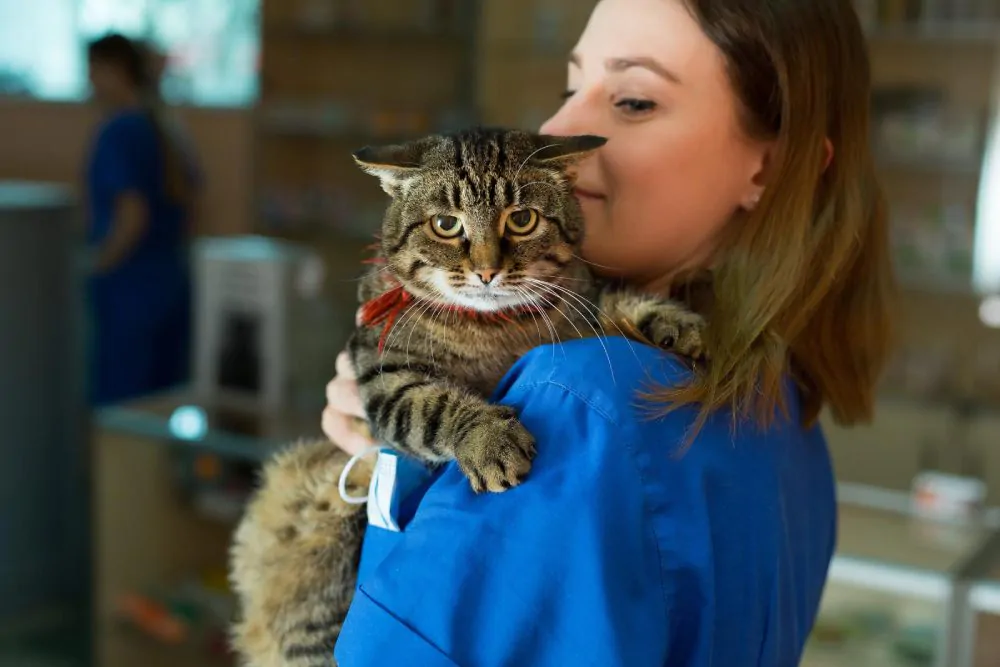
In this essay, research and list the advantages and disadvantages of owning a cat- what positive and negative traits do they have? Then, conclude whether you would recommend getting a cat as a pet to others. Of course, this would be easier if you own or have a cat, but ample research will suffice. This is an excellent topic for an argumentative essay, as you can find many arguments for and against owning a cat online.
It is a fact that cats are loved by many. What makes cats so lovable? In your essay, look into some qualities of cats that make them so beloved and ideal as pets. If you do not have a cat, you can base your essay on interviews with cat owners or information from the internet.
Think of a memorable occasion when you interacted with a cat, whether with your pet, a family member or friend’s cat, or even a stray cat outside. How did it make you feel- were you stressed, relaxed, or disgusted? Your essay should be a retelling of a personal story; do not include others’ opinions or ideas from online sources.
For an engaging argumentative essay, decide which animal you prefer: cats or dogs. Research and write about the advantages and disadvantages of having either of them as a pet, then decide which one you would prefer. Be sure to justify your choice; you can use some of the essay examples above as evidence,
Do you have a favorite breed of cat? How about the species of cat overall? For your essay, write about your favorite type of cat, whether a lion, tiger, or adorable Persian cat. Explain why it is your favorite and, if applicable, any other special meaning the cat has to you.
If you’d like to learn more, check out our guide on how to write an argumentative essay .
For more help, check out our guide packed full of transition words for essays .

Martin is an avid writer specializing in editing and proofreading. He also enjoys literary analysis and writing about food and travel.
View all posts
Can Cats Write? An Exploration of Feline Literacy
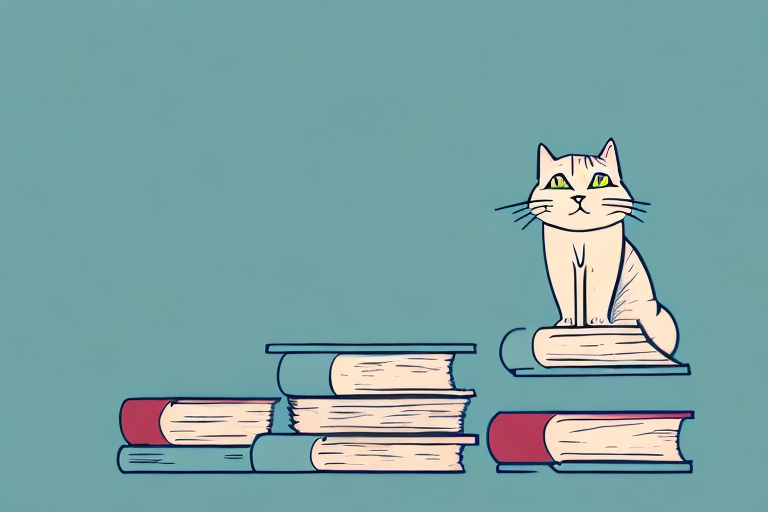
Cats are well known for their agility, grace, and independence – but what about their literary talents? While we don’t often consider our feline friends as skilled writers, the question of whether cats can write is one that has sparked curiosity among animal lovers and scientists alike. In this article, we’ll explore the fascinating world of feline literacy and delve into the question of whether cats are capable of putting pen to paper.
Understanding Feline Intelligence
Before we dive into the specifics of feline literacy, let’s take a look at what we know about cat intelligence. While cats are often seen as aloof and independent, studies have shown that they possess a high degree of cognitive ability. Their brains are capable of complex problem-solving, memory, and even empathy.
It’s important to note that the intelligence of cats can vary greatly depending on a number of factors, including breed, environment, and individual personality. Some cats may be more naturally curious and eager to learn, while others may be more content to simply nap in the sun.
Measuring Cat IQ
To understand feline intelligence, scientists have developed tests to measure a cat’s cognitive abilities. These tests can range from simple tasks like chasing a toy to more complex activities like navigating a maze. Through these tests, scientists have found that cats are capable of learning and adapting to new situations.
One interesting study conducted by researchers at Kyoto University in Japan found that cats are able to use their memories to solve problems. In the study, cats were shown a box with a fish inside, which was then covered with a screen. The cats were then shown how to remove the screen to get to the fish. When the screen was replaced, the cats were able to remember how to remove it and access the fish again, even after a delay of up to 10 minutes.
Interested in cat rescue? See our articles on Cat Rescue .
Comparing Cats to Other Animals
When it comes to intelligence, cats are often compared to other animals like dogs and humans. While each species has its own strengths and weaknesses, cats have been shown to possess a unique set of cognitive abilities. For example, cats have excellent spatial memory and are able to navigate their environment with ease, while dogs are better at social interaction and working in groups.
Interestingly, some researchers have even suggested that cats may be capable of understanding the concept of cause and effect. In a study published in the journal Animal Cognition, researchers found that cats were able to make a connection between pressing a lever and receiving a treat. This suggests that cats may be more intelligent than we give them credit for.
Overall, while there is still much to learn about feline intelligence, it’s clear that cats are capable of much more than simply lounging around the house. With their sharp minds and natural curiosity, cats are fascinating creatures that continue to surprise us with their abilities.
The History of Feline Communication
Cats have been communicating with humans for thousands of years, and throughout history, people have tried to understand their unique language. From ancient Egyptian hieroglyphs to modern-day behavior studies, scientists and cat lovers around the world have been fascinated by the ways in which cats communicate.
Ancient Egyptian Cat Hieroglyphs
One of the earliest documented examples of feline communication comes from ancient Egypt, where cats were worshipped as deities. In hieroglyphs, cats were depicted as symbols of divinity and grace, and many people believed that they possessed otherworldly powers.
Ancient Egyptians believed that cats had the ability to communicate with the gods, and that they were sacred beings. They would often mummify cats and bury them with their owners, believing that the cats would serve as protectors in the afterlife.
The ancient Egyptians also believed that cats could communicate with each other through their tails. They believed that a cat’s tail held great power, and that it could be used to convey messages to other cats. For example, a cat with its tail held high was thought to be feeling happy and confident, while a cat with its tail tucked between its legs was thought to be feeling scared or anxious.
Modern-Day Cat Behavior and Language
Today, we have a better understanding of how cats communicate through their behavior and body language. For example, a cat wagging its tail may be a sign of agitation, while a cat purring is usually a sign of contentment. Understanding these subtle cues can help us better communicate with our feline friends.
Researchers have found that cats communicate with a variety of vocalizations, including meows, purrs, growls, and hisses. Each of these sounds can convey a different message, and cats use them to communicate with both humans and other cats.
Cats also communicate through their body language. For example, a cat that is feeling threatened may puff up its fur and arch its back, while a cat that is feeling relaxed may stretch out and roll over onto its back. Understanding these subtle cues can help us better understand our cats and strengthen the bond between human and feline.
83% of people who adopt cats have this personality trait. Do you? Take the Cat Parent Personality Quiz here !
Can Cats Understand Human Writing?
Now that we have a better understanding of feline intelligence and communication, let’s get back to the original question: can cats write? While it’s unlikely that a cat will ever learn to hold a pen and write out a coherent sentence, some studies have suggested that cats may be able to understand written words.
Recognizing Written Words
In one study, cats were shown a series of written words and then presented with an object that matched the word. For example, they were shown the word “food” and then presented with a bowl of food. The cats were able to recognize the object that matched the word, suggesting that they have some level of understanding of written language.
However, it’s important to note that this study had a small sample size and more research is needed to confirm these findings. Additionally, it’s unclear if cats are actually reading the written words or if they are simply associating the word with the object they see.
Cats and Reading Aloud
Another study found that cats were able to recognize their owner’s voice when they read aloud from a book. This suggests that cats may be able to associate certain sounds and words with specific individuals, which could be a sign of language comprehension.
It’s possible that cats are able to pick up on subtle cues in their owner’s voice, such as tone and intonation, to recognize them when they speak. However, more research is needed to confirm this theory.
Overall, while it’s unlikely that cats will ever be able to write, these studies suggest that they may have some level of understanding of written language and the spoken word.
Teaching Cats to Write
While cats may not be able to physically write, it is possible to train them to perform a variety of impressive tricks and behaviors. Some cat owners have even claimed to have taught their feline friends to “write” by using a special paw-operated device.
Training a cat to perform a trick like “writing” requires patience, time, and a lot of positive reinforcement. The first step is to find a paw-operated device that your cat can use. This can be a small keyboard, a touchpad, or even a specially designed tablet. Once you have the device, you can start training your cat.
Start by introducing your cat to the device. Let them sniff it, paw at it, and get familiar with it. Once they are comfortable with the device, you can start teaching them how to use it. This can be done through a process called clicker training.
Clicker training involves using a small clicking device to signal to your cat when they have done something correctly. For example, if you want your cat to touch a specific key on the keyboard, you would click the clicker and give them a treat every time they successfully touch that key.
Over time, your cat will learn which keys to press to create specific words or phrases. Some cats have even been trained to type out their own names or simple sentences.
Training Techniques and Tools
There are a variety of techniques and tools that can be used to train a cat to perform tricks like “writing.” One effective tool is a clicker. Clicker training involves using a small clicking device to signal to your cat when they have done something correctly. This positive reinforcement can be very effective in teaching your cat new behaviors.
Another effective tool is treats. Cats are highly motivated by food, and using treats as a reward for good behavior can be a powerful training tool. Just be sure to use small, healthy treats to avoid overfeeding your cat.
Toys can also be effective in training your cat. Interactive toys, like puzzle feeders or laser pointers, can help keep your cat engaged and motivated during training sessions.
Success Stories and Limitations
While some cats may be able to perform impressive tricks like “writing,” it’s important to remember that every cat is unique. Some cats may be more receptive to training than others, and it’s important to respect your cat’s individual personality and abilities.
That being said, there have been many success stories of cats learning to perform impressive tricks through positive reinforcement training. From playing the piano to riding a skateboard, cats have proven that they are capable of learning and adapting to new behaviors.
However, it’s important to keep in mind that training a cat to perform tricks like “writing” is not a substitute for proper care and attention. Cats require daily playtime, socialization, and plenty of love and affection from their owners. Training should always be done in a safe and positive environment, and never used to punish or harm your cat.
The Science Behind Feline Literacy
So, can cats write? While the answer is likely no, the question of feline literacy is still an important one to consider. By exploring the science behind cat intelligence, communication, and behavior, we can gain a greater understanding and appreciation for our feline friends.
Neurological Basis for Learning
Studies have shown that cats have a complex neurological system that allows them to learn and adapt to new situations. By understanding the way their brains work, we can better tailor our training techniques and interactions with our furry companions.
The Role of Genetics and Environment
Finally, it’s important to remember that a cat’s ability to learn and understand language may be influenced by both genetic and environmental factors. By providing a stimulating and supportive environment for our cats, we can help them develop their cognitive and communicative abilities to the fullest extent possible.
While cats may never become prolific writers, their unique cognitive abilities and communication skills continue to fascinate us. By exploring the science behind feline intelligence, behavior, and language, we can gain a deeper understanding and appreciation for all the amazing things that our furry friends are capable of.
This article is from Cat Bandit: we’re crazy cat people, on a mission to save rescue cats! Get cat tee shirts with profits going to sponsor rescue cats.
- Kindle Unlimited Free Books
- Writing Piggy Monk Square
- Piggy Monk Square – Book Reviews
- Practical Creative Writing Exercises Book
- Authors Notes – Writing Fiction Street
- The Sunshine Girl
- Kindle Unlimited eBooks for Children
- Writing About Ballyyahoo
- Free Stories For Kids
- The Witch Of Ballyyahoo
A Story For Cats And About Cats.
- Bonkers In Ballyyahoo
- The Little Book Of Swinging On A Gate
- Free as a Ladybird
- The Tree Hugger
- Football Mad – A Funny Children’s Story
- Football Crazy
- Creative Thinking
- Creative Writing – Flow
- Walking and Inspiration
- Dream a Little Dream
- How To Increase Your Creativity in Five Easy Steps
- On Confessing To Depression
- Giving up the Day Job to Write
- Don’t tell me nobody wants to read my stories.
- Political Satire – Funny or Not?
- Talking To Strangers
- Go Set A Watchman – Her Choice?
- Writing For The Market
- Why Women Writers Use Initials
- Ten worst things about social networks.
- How Not To Deal With Criticism
- Transparency and The Irish Film Board
- What Do I Know About Bullying?
- Valentine’s Day And My Green Heart
- Too Many Experts
- Be True To Yourself
- The Glass Castle – Jeanette Walls
- Small Great Things – Jodi Picoult
- Just Friends – Elizabeth Grey
- The Woman Who Walked Into Doors – Roddy Doyle
- Cookie Policy
A STORY ABOUT CATS – FOR CATS
Maggie Many Cats And The Cat That Flew In The Window is a funny story about a crazy cat lady and is a fun read for cat lovers everywhere.
Maggie is one of the characters from my fictional town of Ballyyahoo and as you might have guessed her house is not full of camels.
My daughter, Louise Cardiff, runs a TNR (Trap, Neuter, Return) charity called Greystones Kitty Hostel.
Louise and her team of volunteers work round the clock rescuing and neutering Ireland’s growing number of abandoned and feral cats.
I wrote this story to raise funds to support the hostel.
ABANDONED CATS
Sadly, the problem of abandoned cats has been growing in Ireland. With cats having several litters per year the numbers are out of control.
This is why TNR is so important. Raising funds to meet the cost involved is crucial as there are vet fees as well as food and shelter costs.
Profits from Maggie Many Cats And The Cat That Flew In The Window go towards paying vet fees and ongoing costs involved in the care of the cats – food and medicines etc.
The volunteers involved in TNR are a very dedicated and hardworking bunch and are always kept busy with auctions, sponsored walks, craft sales etc.
I wanted to do my bit to help and since I am not very good at baking or knitting I decided the best thing I could do would be to write a story.
Of course, you can’t do these things all on your own.
I want to say a big thank you to Suzie Hunt who designed the lovely cover, and Neil O’Donnell, the brilliant editor who so very kindly donated his services.
Get yours now and help support cats.
Click here for Amazon.com
Click here for amazon.co.uk, maggie many cats and the cat that flew in the window..
A very funny story for cat-lovers of all ages – about a crazy cat lady who lives in a house filled with musical cats in the magical town of Ballyyahoo in Ireland.
Maggie-many-cats loves her cats and loves her chocolate, in that order. Mostly she’s a peaceful woman but she does still enjoy the odd feud, especially with Biddy – the woman who might just be the witch of Ballyyahoo.
A LOST CAT MAGNET
One day, Maggie finds a strange cat in her garden. She thinks it’s just another lost cat because her house is like a lost cat magnet but this cat is far from lost.
This cat is a very special cat who knows exactly what she wants and exactly where to find it. When Maggie learns just what this cat can do she thinks she’s going mad!
Everyone knows cats can’t fly but then Catleesha’s not an ordinary cat – she has a special magic all of her own.
A STORY ABOUT CATS
Get your paperback now and help support cats.
Share this:
No comments yet., leave a reply click here to cancel reply..
Name (required)
Email (will not be published) (required)
Notify me of new posts by email.
This site uses Akismet to reduce spam. Learn how your comment data is processed .
- Warrior Cats
22 Warrior Cats Writing Prompts
Are you a fan of the wildly popular book series, Warrior Cats, written by Erin Hunter ? If you’ve ever imagined yourself joining the brave and amazing feline warriors in their thrilling adventures, then get ready for a blast! These 22 warrior cats writing prompts will take you on an exciting journey into their world, where danger lurks at every corner and courage reigns supreme. Grab a pen and let your imagination run wild as you create epic tales that will keep readers hooked till the very last word!
Whether you’re an aspiring writer, a seasoned author, or simply a lover of creative storytelling, we’ve created a collection of 22 Warrior Cats writing prompts that will whisk you away to the mystical world of ThunderClan, RiverClan, ShadowClan, WindClan, and beyond. You might also enjoy this list of fantasy writing prompts . And if you’re a fan of cats, then you’ll also love this list of writing prompts about cats .
Warrior Cats Writing Prompts
From imagining new Clans and their territories to diving into the lives of individual cats, these warrior cat prompts cover a wide range of themes, settings, and character dynamics:
- Firestrike, a daring young warrior, uncovers the long-lost Clan of Whispering Shadows hidden deep within the dense forest. As Firestrike grapples with the discovery, they must make a life-altering choice: reveal the existence of this ancient Clan to the others, risking both chaos and newfound allies, or safeguard the secret, carrying the weight of untapped power on their shoulders.
- In the forbidden love saga, Willowbreeze, a graceful warrior from RiverClan, falls deeply in love with Nightfang, a mysterious and courageous warrior hailing from ShadowClan. As their hearts intertwine, they must navigate the treacherous path of their secret romance, torn between their loyalty to their respective Clans and the undeniable connection they share. With the threat of discovery looming they must confront the ultimate question: Is their love worth risking everything they hold dear?
- Write the tale of Willowpaw, a wise and caring medicine cat apprentice from ThunderClan, as she grapples with the challenges of preserving the delicate harmony between the physical world and the realm of spirits. While tending to the wounds of her fellow Clanmates, Willowpaw finds herself torn between her duties as a healer and her eerie visions that blur the line between reality and the whispers of StarClan.
- Create a warrior cat character who possesses a unique and mysterious power. How does this power shape their destiny within their own Clan and the broader Warrior Cats world? You can use our Warrior Cats Name Generator or this list of Warrior Cat Suffixes to get some character name ideas.
- When a devastating disaster strikes, plunging the Clans into turmoil, it is up to Blazestar of ThunderClan, Mistystorm of RiverClan, Fernshade of ShadowClan, and Breezewing of WindClan to set aside their long-standing differences and unite as one. With their territories ravaged and resources scarce, the leaders face a race against time to find a new home for their Clans.
- Write the story of Sagefur, a respected and wise elder of WindClan. In the story, you can journey back in time to reveal their extraordinary experiences during their prime as a warrior. From their early days as the ambitious and agile Sagepaw, navigating the treacherous paths of training, to their climactic role in defending the Clan during a dangerous battle, every step of Sagefur’s journey shaped them into the seasoned and respected elder they are today.
- Imagine a catastrophic event that causes the boundaries between the Clan territories to collapse, forcing the Clans to come together and form a temporary alliance.
- Write about the fierce rivalry between Bramblepaw of ThunderClan and Emberpaw of ShadowClan, as they push their limits, constantly trying to outshine one another and prove their worth as the next legendary warriors.
- Describe a new Clan with its own unique customs, traditions, and territory. How would this clan interact with others in the Warrior Cats world and what conflict could arise? You can use this clan name generator or this warrior cats clan generator to help you.
- Write an emotional story about Willowstar, a compassionate leader of RiverClan, as she faces an unbearable decision that goes against her Clan’s deeply held values. She must make the difficult choice to forge an alliance with unexpected allies, putting her Clan’s trust and her own leadership at stake.
- One clan struggles for survival as prey becomes scarce, pushing them to the brink of starvation. ThunderClan’s resourceful warrior, Reedfur, leads the task of developing innovative hunting techniques and fostering alliances with other Clans to ensure the collective survival of their clan.
- Dust, is a loner who is reluctantly taken in by ThunderClan. With a rough past and an inherent distrust of others, Dust struggles to integrate into the structured life of the Clan, wrestling with feelings of isolation and longing for acceptance.
- In a society governed by physical prowess, join Willowtail, a Clan cat born with a physical disability. With determination and resilience, Willowtail defies societal expectations, finding her own unique path within the warrior code.
- Write a story about a young kit who is prophesied to bring about a great change within their Clan. Faced with many obstacles and self-doubt, she must navigate her own destiny, all while grappling with the weight of expectations and the challenges that arise from embracing her unique role in shaping the future of her Clan.
- A bitter internal conflict tears a once-united clan apart. Stormstar, the courageous leader, struggles to heal the rift and reunite her Clan. Through forgiveness, understanding, and the power of unity, Stormstar must confront the causes of the conflict and guide her Clan towards a brighter future.
- Swiftclaw is a brave warrior who makes the difficult decision to leave their Clan behind and embrace life as a rogue. Fueled by a longing for freedom and independence, Swiftclaw ventures into the unknown, facing the harsh realities of survival outside the structured Clan life.
- Write a story set in a distant future where the Clans have evolved and adapted to a dramatically changed environment. With harsher landscapes, scarce resources, and new threats, the Clans must navigate uncharted territories. How have they transformed, and what new threats do they face?
- Write about a character who discovers a hidden underground network of loners and rogues, known as the Forgotten Shadows. Explore the dynamics between these outcasts and the established Clans as they navigate the delicate balance between survival and secrecy.
- Write a story centred around the life of a Clan elder, recounting their experiences and wisdom gained over many moons. Explore the lessons they impart to the younger generations and the role they play in preserving the Clan’s heritage.
- Imagine a Clan plagued by a mysterious illness that threatens the lives of its members. Follow a determined medicine cat as they unravel the cause of the sickness and search for a cure, racing against time to save their Clan.
- Write about a character who discovers an ancient artefact with mysterious powers hidden within the Clan territories. Explore the consequences of their find and the moral dilemmas they face as they decide whether to harness its power or destroy it.
- A curious young kit stumbles upon a long-forgotten, hidden entrance to the mysterious Moonpool. Describe their extraordinary encounters with StarClan warriors and the profound impact these encounters have on their future.
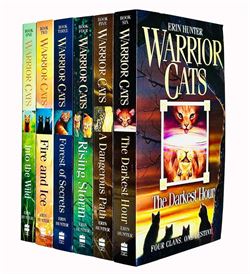
(The button above is an affiliate link. As an Amazon Associate I earn from qualifying purchases.)
Which one of these warrior cat writing prompts did you like best? Let us know in the comments below.
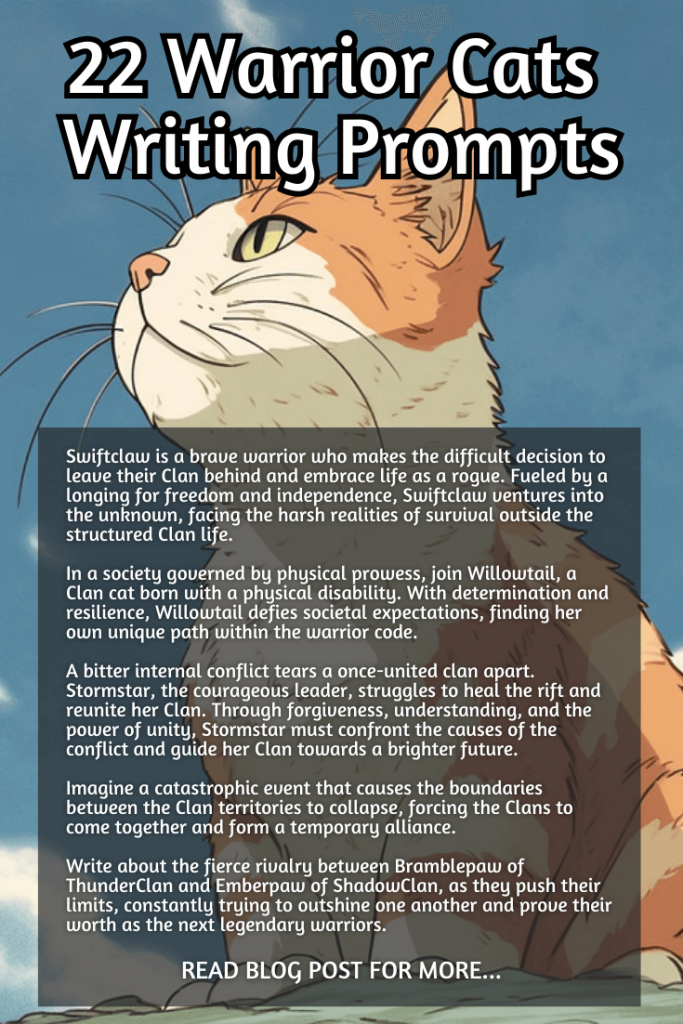
Marty the wizard is the master of Imagine Forest. When he's not reading a ton of books or writing some of his own tales, he loves to be surrounded by the magical creatures that live in Imagine Forest. While living in his tree house he has devoted his time to helping children around the world with their writing skills and creativity.
Related Posts
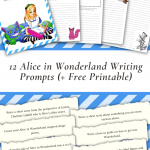
Comments loading...

30 Warrior Cats Story Ideas and Writing Prompts
Do you dream of epic battles under the whispering pines?
Does the drama of Clan rivalries and forbidden romances keep you up at night (because seriously, those cliffhangers!)?
If you bleed Clan colors and crave more Warrior Cats adventures , then buckle up, because this post is your ultimate battle cry!
We’ve all devoured Erin Hunter’s amazing series, but sometimes, the fire still burns for more.
That’s where your creativity swoops in – ready to craft your own pawsome tales!
To spark your imagination , we’ve got a battle patrol of some story ideas and writing prompts that will have you itching to sharpen your claws and dive into the world of Warriors.
So, let’s get those hunting instincts going!
Warrior Cat Story Ideas and Prompts
- In this story, a young warrior cat discovers that they were born into a different Clan and were separated during a great flood. Raised in a Clan that’s not their own, they struggle with identity and loyalty, feeling torn between their adoptive family and the urge to find their biological roots. The journey to discover their true heritage will test their beliefs and loyalty.
- This tale revolves around a medicine cat who has been having prophetic dreams about a disaster that threatens all the Clans. However, the cat is met with disbelief and skepticism when they try to warn the others. The story focuses on their struggle to prove the truth and save the Clans.
- In this narrative , a young warrior cat falls in love with a cat from a rival Clan, defying the strict laws of their own Clan. The story explores the challenges they face, from hiding their relationship to dealing with the consequences of their actions. It’s a tale of love, loyalty, and the price of breaking the rules.
- A mysterious and wise old cat, believed to be a ghost , appears to guide a young and inexperienced warrior through a perilous journey. The cat has to navigate through uncharted territories and face unknown dangers. The ghost cat’s true identity and purpose reveal a deep secret of the forest .
- A seasoned warrior is exiled from their Clan after making a grave mistake. The story follows their journey through solitude and self-reflection , as they seek a way to redeem themselves and regain their honor. Their path to redemption is fraught with challenges and revelations.
- A prophecy speaks of a cat with fire-colored fur who will save the Clans from a great danger. The story follows several cats who could potentially be the one prophesied, each facing their own struggles and adventures. The true identity of the prophesied cat is a mystery that unfolds throughout the story.

- This story centers on a warrior cat who starts seeing a mysterious shadow that no one else can see. As strange events begin to occur in the Clan, the cat must uncover the truth behind the shadow and its connection to an ancient legend. Their discovery will change the Clan’s destiny forever.
- A young warrior discovers an ancient cave with murals depicting the history of their ancestors. As they delve deeper into the past , they start to realize that history is repeating itself, and they have a crucial role to play in the present. This tale intertwines the past and present, showing how history shapes the future .
- In this story, a young warrior cat starts hearing whispers on the wind, guiding them towards an unknown destiny. These whispers lead them to a long-forgotten part of the forest, where they uncover a hidden truth about their Clan’s origin . The whispers challenge the very foundation of the Clan’s beliefs.
- This tale focuses on a group of young cats who are separated from their Clan during a massive storm. Stranded in unfamiliar territory, they must learn to work together and rely on each other’s strengths to find their way back home . Their journey is both a physical and emotional test of survival and unity.
- A phenomenon causes the stars to disappear from the sky, disrupting the guidance of StarClan. A young warrior cat, known for their wisdom and courage , is chosen to embark on a quest to restore the stars and save the Clans from impending doom. The quest reveals secrets about the universe that the Clans inhabit.
- This story revolves around a warrior who is accused of betraying their Clan. Exiled and alone, they embark on a quest to clear their name , uncovering a complex web of lies and deceit within their own Clan. Their journey leads to a shocking revelation about loyalty and truth.

- A medicine cat faces a moral dilemma when they discover a herb that has the power to save lives but also the potential to cause great harm. The story explores the ethical challenges and responsibilities that come with such knowledge. The medicine cat’s decision could alter the fate of all the Clans.
- A cat with a unique ability to move undetected and silently becomes the key to uncovering a sinister plot within the Clan. As they delve deeper, they must decide whether to reveal their secret ability to save their Clan. The story explores themes of self-sacrifice and the greater good.
- In this narrative, a prophecy foretells the rise of two cats from the same litter who will lead their Clan to either prosperity or ruin. The story follows their diverging paths and the impact of their choices on the Clan’s future. The prophecy’s fulfillment hinges on the decisions of these two cats.
- A warrior cat discovers a mystical lake that shows reflections of possible futures. As they grapple with what they see, they must decide whether to use this knowledge for the benefit of their Clan or keep it to themselves. The lake’s visions bring both hope and fear , testing the cat’s resolve.
- When a rare eclipse darkens the forest, a young warrior cat is chosen by StarClan to uncover an ancient secret buried deep within the Clan’s territory. This secret has the power to change the fate of all the Clans. The cat’s journey reveals a forgotten chapter of Clan history.
- A story about a cat who can communicate with the animals of the forest. This unique ability leads them to discover a looming threat not just to their Clan, but to the entire forest ecosystem. The cat must convince their Clan of the unseen danger before it’s too late.

- In this tale, a warrior struggles with an inner fury that enhances their abilities but also threatens to overwhelm them. The story explores their battle to control this power and use it to protect their Clan. Their internal struggle mirrors the external conflicts they face.
- After being wrongly accused of a crime, a warrior cat is banished. The story follows their survival in the wild and the new alliances they form, leading to a deeper understanding of the world beyond the Clan territories. Their eventual return challenges the prejudices and beliefs of their former Clanmates.
- A mysterious illness strikes the Clan, and a young cat discovers that the cure lies in a legendary green meadow, known only in old tales. The journey to find this meadow tests their bravery and determination. This quest uncovers more than just a cure, revealing ancient secrets.
- As a Clan faces the threat of being torn apart by internal strife, a young warrior cat envisions a peaceful future. The story focuses on their efforts to unite the Clan and heal the rifts, while dealing with opposition and skepticism. Their vision of peace becomes a beacon of hope in troubled times.
- A Clan is terrorized by a mysterious entity known as “The Shadow,” and a young, fearless warrior is tasked with tracking it down. Their journey takes them to the very edges of the Clans’ territories, where they uncover an unexpected truth. The revelation about The Shadow forces the warrior to question everything they know.
- This story revolves around a warrior cat with the rare ability to sense the emotions and thoughts of others. They stumble upon a deep-seated sorrow within the Clan, leading to a quest to resolve an old, unresolved tragedy. Their unique gift becomes key to healing old wounds and bringing the Clan closer together.

- In the midst of the harshest winter , a warrior cat discovers that the extreme cold is not a natural occurrence but the result of a curse from an angered spirit . The story follows their perilous journey to appease the spirit and end the unending frost. Their quest not only battles the elements but also delves into ancient spiritual lore.
- A tale of a mute warrior cat who communicates solely through actions and expressions. They witness a sinister plot unfolding within their Clan but struggle to convey the danger to their Clanmates. Their unique perspective and mode of communication turn out to be pivotal in averting the looming crisis.
- On a special night when fireflies fill the forest, a young cat embarks on a traditional journey of self-discovery, following the dancing lights. This journey becomes a rite of passage, filled with challenges and mystical encounters. The fireflies lead them to a revelation about their own destiny and the future of the Clan.
- Set around a sacred stone circle, a cat is chosen as its guardian, a position of great honor but heavy responsibility. They soon discover that the stones hold ancient power and secrets that are vital to the Clan’s survival. Their role as guardian becomes a journey of power, sacrifice, and wisdom.
- A warrior cat finds solace and guidance in conversations with a wise, ancient willow tree . The tree’s whispers speak of impending changes and hidden truths that the warrior must unveil to ensure the Clan’s prosperity. The willow’s ancient wisdom offers insights that challenge and enlighten the young warrior.
- A story about a cat who begins to hear the voices of cats long passed, echoing from the Clan’s burial ground. These voices guide, warn, and sometimes confuse the cat, leading them on a journey to understand the thin veil between life and the afterlife. Their connection to the past brings new perspectives to the living.

Founder and Chief Content Curator @ Digital Phrases
I'm a writer, words are my superpower, and storytelling is my kryptonite.

OXFORD MAGAZINE
a mid-western publication of literature & art
Creative Nonfiction Should Be About Cats: What I Read for When Reading Submissions
When approached to discuss what I look for in a creative nonfiction submission, my immediate response was: “Are they writing about cats? If not, then Bye, Felicia .” Seriously, you have no idea how indescribably happy I would be reading all about your crazy cat lady ways and the beautiful felines that illuminate your lives. Sadly for me (although maybe not-so-sadly for you), I know that’s an unrealistic expectation.
So what do I really look for when I’m reading creative nonfiction? Well, first things first: Did you get my attention? Not unlike my hopeful attempt to catch your attention through my crazy cat lady anecdote, a label I proudly wear, starting your own piece with a well-crafted beginning is a surefire way to make sure that I make it all the way through your narrative. Like I tell my college freshmen in our composition class, the set-up to their piece is one of the most important ways to ensure that your audience reads the whole thing. An effective opening, I think, catches its audience’s attention and hints at what I’m going to read about later in the piece. Sure, that sounds easy enough. And yet, you’d be surprised at how often my students resort to cliches: “From the beginning of time,” “Today’s society,” or “Oxford English Dictionary defines X as…” These ineffective hooks exist in creative writing, too: “‘Twas a dark and stormy night,” for example, or “My mama always told me, ‘Life’s like a box of chocolates.’” I’d rather read about a cat that has absolutely nothing to do with the story than dialogue from characters I don’t even know or the weather happening during the moment you’re introducing us to. What I’m trying to get at is the more finessed the set-up is, the more likely I’ll be able to get deeper and deeper into your narrative.
In terms of content, I need to be able to believe what you’re telling me. Not only should I be engaged through your compelling set-up, then, but I should also be reading about something nontrivial that doesn’t fall flat as the narrative progresses. Defining significance is obviously subjective, but if the moment was one of importance, I need to feel and understand why. The submission doesn’t have to be out-of-this-world strange, which isn’t to say that it can’t be, but it should be compelling and engaging. Most of all, it should be believable. I want a glimpse at a moment that made you uncomfortable, that made you grow, that made you struggle, that actually happened. A story about becoming a cat, for example: Cool, bro. I really hope that happened to you (and let’s face it, I’d be super envious if it did), but there’s a fine line between a dream about being a cat and literally becoming a cat.
What isn’t believable is your impeccable memory for entire conversations that happened among the characters. Not to throw shade or anything, but creative nonfiction, to me, requires a certain amount of introspection and relies more heavily on the events that drive the plot forward. Passive dialogue is your friend. “‘Meow,’ the cat said,” versus, “The cat meowed.” While I hate to take agency away from your cat, or whoever else is making an appearance in your submission, I get a little suspicious when I read long conversations or directly quoted monologues. I’m more concerned about what actually happened and how it affected the characters in the midst of these things.
Of course, these are all merely guidelines: I realize and acknowledge that there isn’t an exact formula we can use to create the perfect piece of creative nonfiction. And honestly, I trust your judgment to write something that works and your skill to craft an engaging text, but I also trust my ability to culturally situate your text. That’s my job as a literary critic. (I know, I’m saddened by the inability to be a professional crazy cat lady, too.) Ultimately, I think what I’m trying to say is: “Are you writing about cats? If not, then Bye, Felicia .” I just want to know all of the cats.
-Joshua B. Jones
Talk to our experts
1800-120-456-456

Essay on Cat
The cat is a domestic animal. Its scientific name is Felis catus. It is a small animal that belongs to the “Felidae” family. The cat is the only domesticated species of the family. Other members include tigers, panthers, etc. Cats are adorable animals and are petted by lots of people in the world. They are playful and spending time with them reduces stress and anxiety. In this essay about cats in English , their nature, behaviour and diet have been discussed.
Cat Paragraph in English
Cats are of three types- house cats, farm cats and feral cats. House cats are the cats we pet in our houses. Cats become good friends of humans. Unlike dogs, cats are not very active around their owners. However, they are good emotional companions to their owners. An essay on cats must emphasize the fact that cat-sitting has been proven to be therapeutic by many researchers.
Any ‘my pet cat essay for Class 6’ must include a few details about the appearance of cats. Cats have very sweet features. It has two beautiful eyes, adorably tiny paws, sharp claws, and two perky ears which are very sensitive to sounds. It has a tiny body covered with smooth fur and it has a furry tail as well. Cats have an adorable face with a tiny nose, a big mouth and a few whiskers under its nose. Cats are generally white in colour but can also be brown, black, grey, cream or buff.
Cats are omnivores. They eat vegetative items such as rice, milk, pulses, etc. as well as fish, meat, birds, mice, etc. Therefore, cats can feed on both types of food.
It is worth mentioning in this my pet cat essay for Class 6 that cats are considered sacred in several cultures such as the Japanese culture. Cats are often depicted as symbols of wit and honour. Several folklores include stories about the intelligence of cats.
Apart from being clever and sweet, cats are also skilful hunters. They use their sharp, pointed nails and canines (teeth) to kill animals like snakes, mice and also small birds. Cats are also helpful to their owners as they protect the household from rats. Thus, from this cat essay, it can be said that cats are helpful pets as well.
However, any essay on cats would be incomplete without writing about their babies. A cat offspring is called a “kitten”. Cats are very protective and caring towards their kittens. They feed the kittens and raise them. Kittens are extremely tiny and adorable as well. Their eyes open sometime after they are born. Kittens are very energetic and they spend their time playing with each other and loving their parents.
Now this cat essay will discuss the nature of cats. Cats are very lazy creatures. They usually spend their time napping and sleeping in warm places. Cats have a slow approach to their lives. They are not very energetic animals and they yawn very adorably whenever they are tired. Cats are very good friends to humans if they trust them. Cats like to sleep close to humans for their body warmth.
A Short My Pet Cat Essay for Class 6
In the following, my favourite pet cat essay, the cat’s behaviour, diet and appearance are discussed. Cat is a domestic animal. Cats are very beautiful and friendly animals. They are very good at hunting rats and snakes.
Cats have two eyes, a tiny nose, two perky ears, four legs and a tail. Their bodies are covered with smooth fur. They have whiskers under their nose. They have sharp claws and tiny paws. Cats are very lazy animals. They sleep a lot during the day. Cats are very good friends to humans. Cats eat both animals and vegetables.
With that, this cat essay in English comes to its conclusion. This cat essay includes various information about cats in short. In a nutshell, this cat essay for kids discusses why cats are loved by many people.
My Pet Cat Essay for Class 1
Cats are domestic animals. They are small in size. Their bodies are covered with smooth fur. They have two mesmerizing eyes, two highly sensitive ears, four legs, whiskers under their nose and a long tail.
Cats are of three kinds, namely- farm cats, house cats and feral cats. House cats are petted by many people all across the globe. Cats are considered sacred in some traditions and cultures like the Japanese culture. Cats are very witty animals. They are very skilful hunters of rats, snakes, etc. Cats are very lazy pets, they sleep for long hours in a day and they are friendly to people they trust. Cats are not very social animals. Its offspring is called a “kitten”. Cats belong to the same family of tigers and panthers. Cats feed on both vegetables and animals and are, therefore, omnivores. Cats are very beautiful animals and they’re a favourite of many people.
With that, my pet animal cat essay comes to an end. In this essay on cats for class 1, their types, appearance, behaviour, diet and nature are discussed. These are some reasons why cats are adored by many.

FAQs on Cat Essay
1. What is a Cat’s Average Lifespan?
A cat’s average lifespan ranges from two to sixteen years. This is usually in the case of indoor cats as compared to street cats whose lifespan extends only up to 5 years. The lifespan of a cat depends on the lifestyle they adapt to as well as the environmental hazards they are protected from. A person must contact a veterinarian and use the tips given to ensure that the cat is able to survive longer and lead a healthier lifestyle.
2. How Many Breeds of Cats are There on the Planet?
There are sixty recognized cat breeds in the world at present. Some of them are- Persian cats, Birman, Siberian cats, Siamese cats, British Shorthair, American Shorthair, etc. Some of the most common cat breeds known are Domestic shorthair, American shorthair, Domestic Longhair, Russian Blue, Bengal, Scottish Fold, etc. Different breeds have different characteristics in terms of their behaviour, personalities and needs. Some of them are reserved and short-tempered while some are extremely affectionate and loving. There are some breeds that are extremely independent while others are devoted to their owners.
3. How do Cats Clean Themselves?
The tongues of cats are scaly and they are excellent for cleaning the fur of cats. Cats keep their fur clean by licking their bodies. They are epitomes of cleanliness in terms of hygiene and hence use their tongue, paws and teeth to clean themselves clean. They use their rough/barbed tongues to lick, the paws for absorbing moisture and using it to clean off the dirt as well as their teeth to pick out the stubborn specks from their body.
4. How do we know that a cat is suffering from a health issue?
Cat owners must be very vigilant about the health of their cats by observing changes in their movements time and again. Once a cat reaches a certain age, it is obvious that their diet routine and their behaviour. For those cats suffering from major infections or diseases, regular checkups at the vet are mandatory. Once every two months is the recommended period of time to get a cat checked for health issues. Some symptoms like hiding, aggression towards people, loss of interest towards surroundings, neglect to groom or unusual vocalisation should be monitored.
5. What should domestic cats eat?
There is a difference in the diets of domesticated cats and street cats. Most of the time street cats are found to dig through garbage for leftover food for survival or catch smaller live animals as a part of their hunting tactics. In the case of domesticated cats, veterinarians usually suggest a compact diet that is healthy and to the liking of the cats. Regulating the food every day can prevent the cats from being either malnourished or overweight. Cats mostly prefer meat so boiled or cooked fish, chicken or red meat can be included plus cat food containing the same can also help in building their immune system and protect their heart, eyes and bowel movements. Raw meat and dairy products like cheese should be avoided as they are very harmful.

Creative Writing Program Marks Three Decades of Growth, Diversity

By Luisa A. Igloria
2024: a milestone year which marks the 30 th anniversary of Old Dominion University’s MFA Creative Writing Program. Its origins can be said to go back to April 1978, when the English Department’s (now Professor Emeritus, retired) Phil Raisor organized the first “Poetry Jam,” in collaboration with Pulitzer prize-winning poet W.D. Snodgrass (then a visiting poet at ODU). Raisor describes this period as “ a heady time .” Not many realize that from 1978 to 1994, ODU was also the home of AWP (the Association of Writers and Writing Programs) until it moved to George Mason University in Fairfax, Virginia.
The two-day celebration that was “Poetry Jam” has evolved into the annual ODU Literary Festival, a week-long affair at the beginning of October bringing writers of local, national, and international reputation to campus. The ODU Literary Festival is among the longest continuously running literary festivals nationwide. It has featured Rita Dove, Maxine Hong Kingston, Susan Sontag, Edward Albee, John McPhee, Tim O’Brien, Joy Harjo, Dorothy Allison, Billy Collins, Naomi Shihab Nye, Sabina Murray, Jane Hirshfield, Brian Turner, S.A. Cosby, Nicole Sealey, Franny Choi, Ross Gay, Adrian Matejka, Aimee Nezhukumatathil, Ilya Kaminsky, Marcelo Hernandez Castillo, Jose Olivarez, and Ocean Vuong, among a roster of other luminaries. MFA alumni who have gone on to publish books have also regularly been invited to read.
From an initial cohort of 12 students and three creative writing professors, ODU’s MFA Creative Writing Program has grown to anywhere between 25 to 33 talented students per year. Currently they work with a five-member core faculty (Kent Wascom, John McManus, and Jane Alberdeston in fiction; and Luisa A. Igloria and Marianne L. Chan in poetry). Award-winning writers who made up part of original teaching faculty along with Raisor (but are now also either retired or relocated) are legends in their own right—Toi Derricotte, Tony Ardizzone, Janet Peery, Scott Cairns, Sheri Reynolds, Tim Seibles, and Michael Pearson. Other faculty that ODU’s MFA Creative Writing Program was privileged to briefly have in its ranks include Molly McCully Brown and Benjamín Naka-Hasebe Kingsley.
"What we’ve also found to be consistently true is how collegial this program is — with a lively and supportive cohort, and friendships that last beyond time spent here." — Luisa A. Igloria, Louis I. Jaffe Endowed Professor & University Professor of English and Creative Writing at Old Dominion University
Our student body is diverse — from all over the country as well as from closer by. Over the last ten years, we’ve also seen an increase in the number of international students who are drawn to what our program has to offer: an exciting three-year curriculum of workshops, literature, literary publishing, and critical studies; as well as opportunities to teach in the classroom, tutor in the University’s Writing Center, coordinate the student reading series and the Writers in Community outreach program, and produce the student-led literary journal Barely South Review . The third year gives our students more time to immerse themselves in the completion of a book-ready creative thesis. And our students’ successes have been nothing but amazing. They’ve published with some of the best (many while still in the program), won important prizes, moved into tenured academic positions, and been published in global languages. What we’ve also found to be consistently true is how collegial this program is — with a lively and supportive cohort, and friendships that last beyond time spent here.
Our themed studio workshops are now offered as hybrid/cross genre experiences. My colleagues teach workshops in horror, speculative and experimental fiction, poetry of place, poetry and the archive — these give our students so many more options for honing their skills. And we continue to explore ways to collaborate with other programs and units of the university. One of my cornerstone projects during my term as 20 th Poet Laureate of the Commonwealth was the creation of a Virginia Poets Database, which is not only supported by the University through the Perry Library’s Digital Commons, but also by the MFA Program in the form of an assistantship for one of our students. With the awareness of ODU’s new integration with Eastern Virginia Medical School (EVMS) and its impact on other programs, I was inspired to design and pilot a new 700-level seminar on “Writing the Body Fantastic: Exploring Metaphors of Human Corporeality.” In the fall of 2024, I look forward to a themed graduate workshop on “Writing (in) the Anthropocene,” where my students and I will explore the subject of climate precarity and how we can respond in our own work.
Even as the University and wider community go through shifts and change through time, the MFA program has grown with resilience and grace. Once, during the six years (2009-15) that I directed the MFA Program, a State Council of Higher Education for Virginia (SCHEV) university-wide review amended the guidelines for what kind of graduate student would be allowed to teach classes (only those who had already earned 18 or more graduate credits). Thus, two of our first-year MFA students at that time had to be given another assignment for their Teaching Assistantships. I thought of AWP’s hallmarks of an effective MFA program , which lists the provision of editorial and publishing experience to its students through an affiliated magazine or press — and immediately sought department and upper administration support for creating a literary journal. This is what led to the creation of our biannual Barely South Review in 2009.
In 2010, HuffPost and Poets & Writers listed us among “ The Top 25 Underrated Creative Writing MFA Programs ” (better underrated than overrated, right?) — and while our MFA Creative Writing Program might be smaller than others, we do grow good writers here. When I joined the faculty in 1998, I was excited by the high caliber of both faculty and students. Twenty-five years later, I remain just as if not more excited, and look forward to all the that awaits us in our continued growth.
This essay was originally published in the Spring 2024 edition of Barely South Review , ODU’s student-led literary journal. The University’s growing MFA in Creative Writing program connects students with a seven-member creative writing faculty in fiction, poetry, and nonfiction.
Enhance your college career by gaining relevant experience with the skills and knowledge needed for your future career. Discover our experiential learning opportunities.
Picture yourself in the classroom, speak with professors in your major, and meet current students.
From sports games to concerts and lectures, join the ODU community at a variety of campus events.
- Special Topic Courses
- Undergraduate
- B.A. in English
- Academic Advising
- Career Paths
- First-Year Writing
- Internships
- Professional Writing
- Scholarships
- M.A. in English
- MFA in Creative Writing
- M.S. in Technical Communication
- Accelerated Bachelor’s-Master’s Degree (ABM)
- Research and Engagement
- Literary Readings and Contests
- Film Studies Events and More
- Language and Life Project
- Young and Teen Writers Workshops
- Alumni and Friends
My NC State Story: Brian Riddick (English ’08)
I started at NC State as a political science major but transferred to study English (LWR) with hopes of entering law school. I’ve always loved writing, but truly found my niche while studying at State. Dick Reavis was a professor of mine twice and also my adviser. He became a thought partner for my career planning as I neared graduating at the height of the recession. When I thought that studying English was just a way for me to prepare for law school, he helped me see that writing was a natural talent that I could grow into a career. Between my conversations with Reavis, studying African American literature with Dr. Sheila Smith-McKoy, and a creative writing class that I took as a junior, I rediscovered my love of literature and creative writing. In 2017, nearly 10 years after graduating, I finally self-published my first short story, “Rick Jr.” which is the first installment in what will be a series called Rich Little Poor Boy.
Brian Riddick is dean of college counseling at the Noble Network of Charter Schools (Chicago).
This post was originally published in College of Humanities and Social Sciences.
More From Department of English
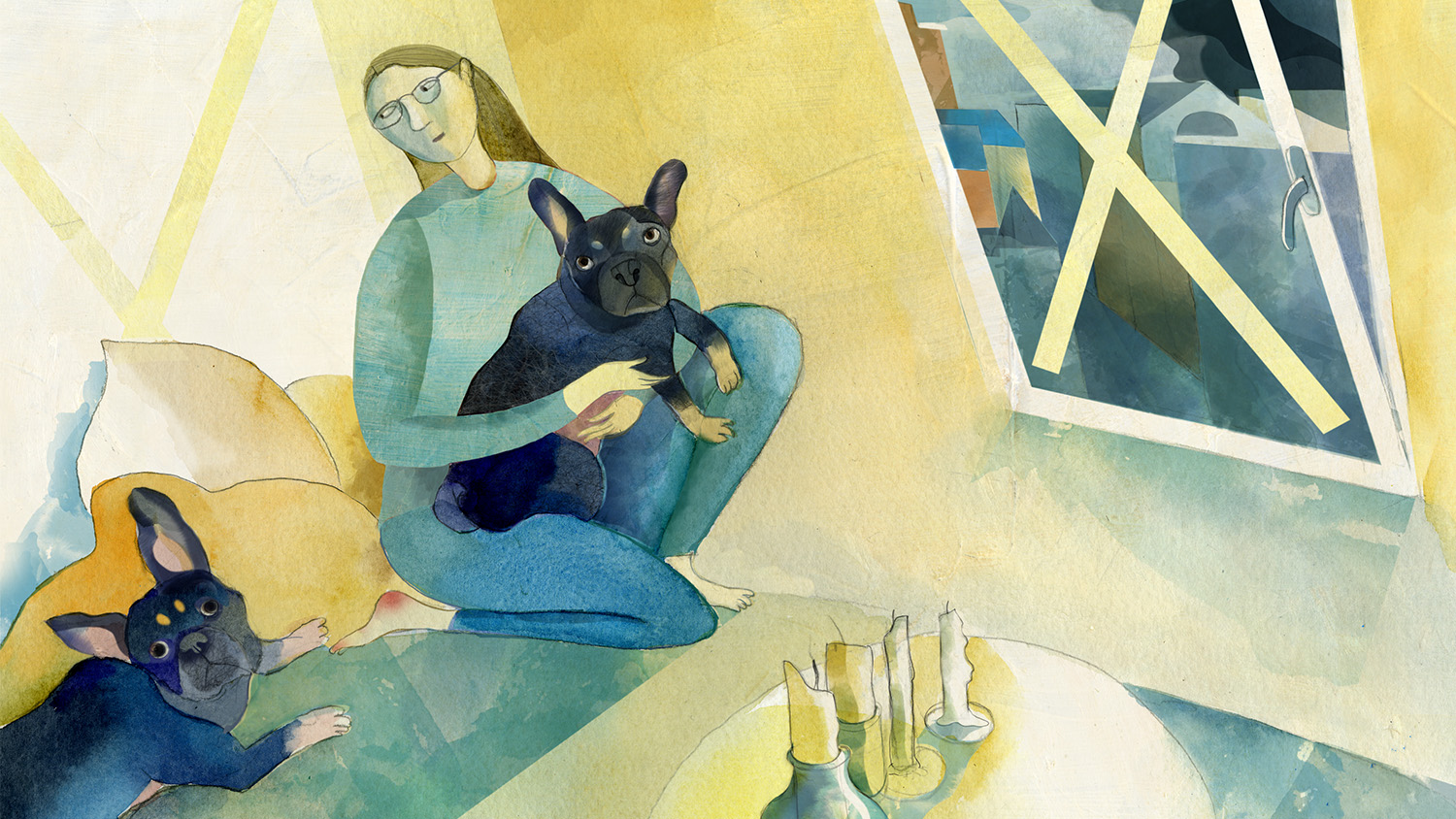
“Volya”

Beyond the Story
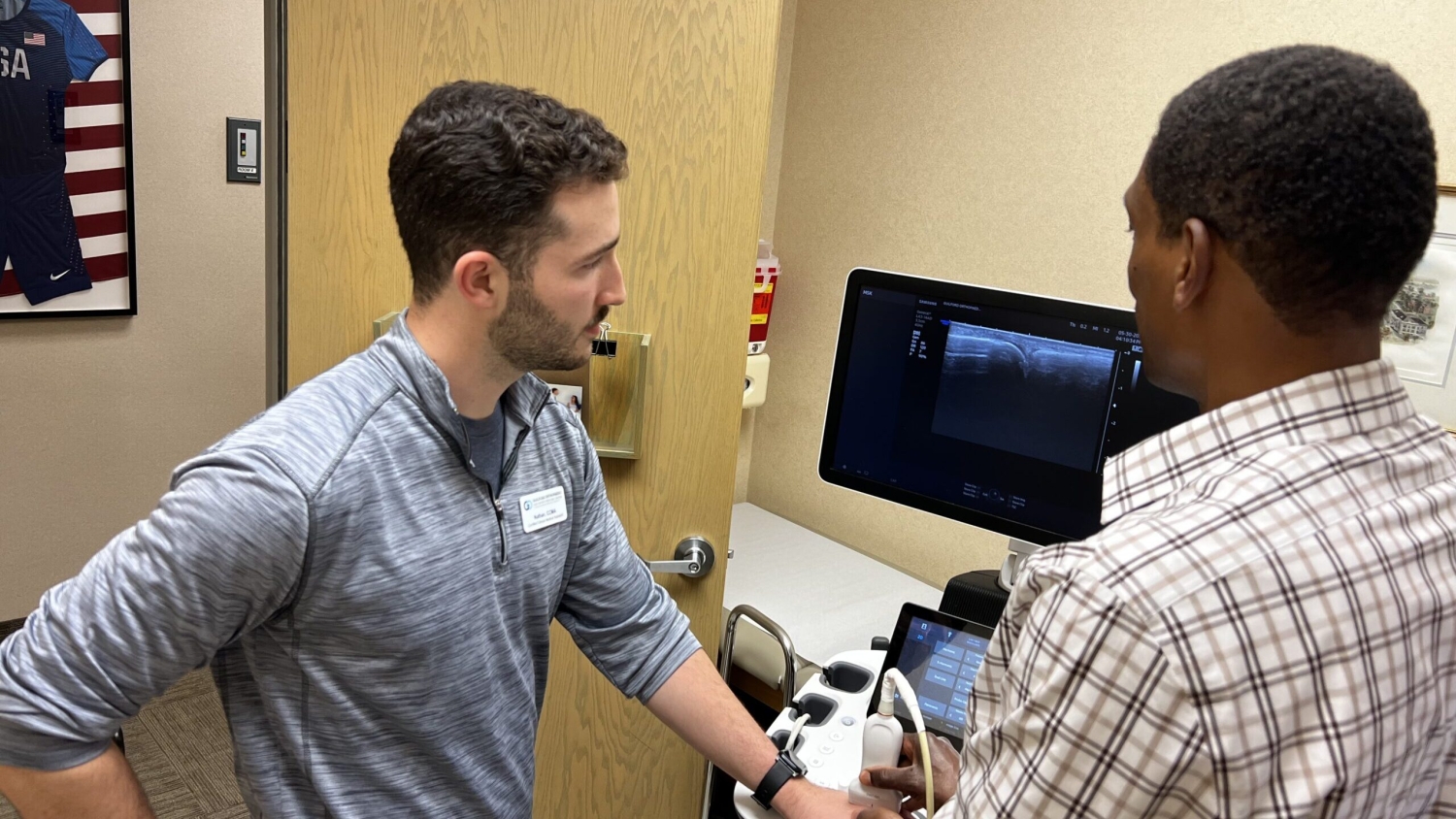
Middle English to Medicine
Ohio State nav bar
Ohio state navigation bar.
- BuckeyeLink
- Search Ohio State
Arts and Sciences Summer Exploration Program
The Arts and Sciences Summer Exploration program offers middle and high school students one-week intensive enrichment courses intended to introduce them to new areas of study or allow them to engage in content they may already have an interest in. In-person classes meet from 9:00 a.m. to 4:00 p.m. Monday through Friday, and are taught by Ohio State faculty, staff, and graduate students. Teaching is active, hands-on and encourages participants to engage with the instructional team and their fellow participants. These courses are not for grade or credit and are designed for self-motivated learners.
Eligibility is based on a participant’s current grade level for the 2023-2024 school year. Students currently enrolled in 7 th and 8 th grades are eligible for middle school courses. Students currently enrolled in 9 th – 11 th grade are eligible for high school courses.
If you have questions about this program, please contact [email protected] or call Courtney Price at 614-292-8208.
The application deadline for Summer 2024 courses has passed. We invite you to sign up for updates to receive information about our programs and be alerted when the when future application windows open.
2024 Course Offerings
Explorations in creative writing.
Dates : June 3–7
Eligibility : Middle School (current grade 7-8)
Description : In this course, we will take a deep dive into poetry, fiction, and nonfiction writing! In each genre, we’ll be thinking about what it means to develop our own individual writing voice that’s unique to who we are. During the week, we will experiment with daily writing exercises based off prompts crafted to spark creativity and seek inspiration from reading classic and contemporary literary work, as well as different forms of art, such as music and collage.
Through this course, participants will hone their writing voice in multiple genres. By the end of the course, each participant will have an impressive portfolio of writing developed in our supportive writing community.
Prerequisites: Previous experience with the subject matter is not required for this course.
Astronomy as a Gateway to the Data Sciences
Eligibility : High School (current grade 9-11)
Description : Astronomy has entered the “big data” era, in which huge collections of measurements are analyzed to attack the most challenging problems. In this course, we will explore how even the simplest data – the positions and brightness of stars – can address an active research problem. We will build the components of a data analysis pipeline using the most basic parts of the Python programming language, and use real data to search for young stars that have diffused away from the clusters they were born in.
This course will explore many aspects of competency in the data sciences. This is a true research project! We do not know the answers in advance but will discover them as part of our course. This course will include small group exploration, interviews, peer teaching, and pair programming. Through this course students will learn basic statistical analysis, and gain experience in several fundamentals in the Python programming language.
Prerequisites:
- Participants should have completed high school algebra or geometry prior to taking this course.
- Previous experience with astronomy and programming is not required for this course.
Specific Course Requirements:
- Contact [email protected] if lack of access to a personal computer would limit participation.
Sensational Science: Exploring Human Perception
Description : Discover the wonders and mysteries of how we perceive the world around us. Participants will explore not only the traditional five senses — sight, hearing, taste, smell, and touch — but also examine proprioception, nociception, balance, and the complex neural networks that integrate sensory information.
Through a dynamic blend of lectures, hands-on experiments, interactive activities, and group discussions, participants will learn the science behind how we perceive our environment and ourselves. This course will enhance critical thinking and scientific inquiry skills through investigations of how our brains interpret sensory information. Going beyond the basics, this course will uncover the fascinating spectrum of sensory and perception disorders. From the challenges of navigating the world with color blindness or anosmia to the extraordinary experiences of synesthesia, students will gain a comprehensive understanding of how diverse the human experience of the world can be.
Prerequisites: Previous experience with the subject matter is not required for this course.
Printmaking
Dates : June 10-14 Eligibility : Middle School (current grade 7-8)
Description : This studio-based, hands-on course will be held in the Ohio State Print Shop in Hopkins Hall. Participants will be introduced to a variety of printmaking techniques including screenprinting, relief printing, monoprinting, risography, and bookmaking. Participants will have the option to focus their work through the lens of comics, storytelling, and character design, if they so choose. At the end of the week participants will visit the Billy Ireland Cartoon Library on Ohio State campus, where they will view exhibitions and archives of comics and sequential art.
Through this course, participants will learn how to operate specialized printing presses, tools, and equipment. Participants will create an original portfolio of printed works on paper and fabric. Participants will have the opportunity to share their prints and acquire works by their fellow participants through a course print exchange.
During this course students will use sharp tools and operate printmaking equipment. Students will be supervised and provided with personal safety training for every technique, but there is an inherent risk of injury.
Prerequisites: Previous studio art experience is not required to successfully participate in this course.
Course Specific Requirements:
- Close-toe shoes are recommended.
- Clothing may get art materials on them. Participants should dress accordingly.
Intercultural Competence for Future Global Leaders
Dates : June 24-28
Description : Intercultural competence is conceptualized as a lifelong process that includes the development of the attitudes (respect and valuing of other cultures, openness, curiosity), knowledge (of self, culture, sociolinguistic issues) skills (listen, observe, interpret, analyze, evaluate, and relate), and qualities (adaptability, flexibility, empathy and cultural decentering) in order to behave and communicate effectively and appropriately to achieve one’s goals.
In this course, participants will learn what it takes to become globally-minded and acquire the skills to navigate in multiple, diverse, global and local networks. Participants will understand the core concepts related to culture and intercultural competence, learn the basics of American Sign Language (ASL), develop cultural self-awareness, and understand the relationship between intercultural competence, citizenship and leadership.
Course Specific Requirements:
Application and deadline
The 2024 Arts and Sciences Summer Exploration Program application will remain open through May 15 . Space in each course is limited, so individual courses may fill before the May 15 deadline.
If a participant requires an accommodation such as interpretation to participate in this program, please contact the program at [email protected] or 614-292-8208. Requests should be made as soon as possible. Requests made two weeks before the first day of a course will generally allow us to provide seamless access, but the university will make every effort to meet requests made after this date.
We invite you to sign up for updates to receive information about our programs and be alerted when the when future application windows open.
Costs and aid
The program fee for the Arts and Sciences Summer Exploration 2024 program is $550 per one-week course , which includes all course materials and activities, lunch, and snacks.
Limited need-based financial assistance may be available in the form of partial support. Financial assistance can be requested on the program application.
Payment deadlines
Applicants have one week to accept their offer of admission to the program and pay the program fee. All payments must be made through the applicant portal. Once an offer is accepted and payment made, the parent or legal guardian must submit emergency contact and medical information, as well as signed Policy Acknowledgement and Consent forms no later than May 27, 2024.
Refund Policy
The Arts and Sciences Summer Exploration Program recognizes that sometimes plans change. Participants may request a refund of the program fee by emailing [email protected] according to the following schedule:
- On or before May 1, 2024: 100% of program fee paid
- May 2 – May 15, 2024: 50% of program fee paid
- On or after May 16, 2024: No refund of program fee paid
Program Details
While plans for each course may differ slightly, the daily schedule follows this general model:
- Drop off 8:15 - 8:45 a.m.
- Morning session 9:00 - 11:30 a.m.
- Travel to lunch 11:30 - 11:45 a.m.
- Lunch at Traditions 11:45 - 12:45 p.m.
- Travel time 12:30 - 12:45 p.m.
- On campus activity 12:45 – 1:45 p.m.
- Afternoon session 2:00-3:45 p.m.
- Travel to pick-up location 3:45 - 4 p.m.
- Pick up 4:00 - 4:30 p.m.
Participants will always be escorted between pick-up/drop-off, their assigned classroom, the dining hall, and the on-campus activity by program staff. Additional information about the program will be emailed to participants and families, as needed, closer to the start of the program.
Lunch will be provided daily at the Traditions at Scott dining hall and will be supervised by program staff. Traditions provides a wide variety of food options that meet the most common dietary needs and restrictions, including halal, gluten-free and vegetarian. However, kosher dining is not supported during summer term.
The pick-up and drop-off location for students is the corner of Annie and John Glenn Avenue and Millikin Road, outside of the PAES building (see maps below). Please drop your child off from the eastbound lane of Annie and John Glenn Avenue. The drop-off/pick-up location will be marked with a sign and program staff will be present to check your child in and out of the program.
If you are using a navigation system for directions, enter the following address: 305 Annie and John Glenn Avenue, Columbus, Ohio, 43210.
Please do not park in the drop-off/pick-up lane. If you need to park, or your child is driving themselves to and from the program, the closest surface lot parking is at the Ohio Stadium. The closest garage parking is Tuttle Garage. You can learn more about parking at Ohio State, including hourly rates, on the CampusParc website .

The image above shows the ideal route to the drop off and pick up location. The image below shows the drop off and pick up lane from the street view.

For those riding COTA, the closest bus stop to the drop-off/pick-up location is N. High Street & E. 15th Avenue. See the COTA website for more information.
The first day of the program will kick-off with a brief orientation session. At 8:45 a.m. program staff will walk the students to the orientation location. At the orientation, students will receive a program t-shirt and lanyard, the program staff will be introduced, and the daily schedule will be reviewed. After orientation, students will be escorted to their classrooms and the morning session will begin.
What to Wear
Participants should wear comfortable clothing appropriate for the classroom, as well as for a range of temperatures. For most courses, participants will spend most of the day inside air-conditioned classrooms. However, we will be walking between the drop-off/pick-up location, classrooms, campus locations and the dining hall. Dressing in layers and wearing comfortable walking shoes is recommended. Any course specific requirements are listed in the course description.
Friday What to Wear
Each Friday on the last day of classes, we will take pictures of each class cohort. We encourage participants to wear their Arts & Sciences Summer Exploration t-shirt on Friday for this event!
Daily Packing List
- Cell phone and charger (optional)
- Any special academic materials needed for courses beyond this basic list will be provided by the program.
- Snacks and water: Participants should bring a refillable water bottle every day. While the program will provide an afternoon snack, participants are allowed to bring their own snacks. However, we request that, for the safety of participants with nut allergies, no snacks containing nuts be brought to the program.
- Personal medications in their original labeled containers (if taken during the day)
- Sunscreen and umbrella or rain jacket (optional)
The documents linked below are samples of the required program forms. Once an applicant accepts their offer of admission, the parent or legal guardian will receive an email from DocuSign with links to these forms. Forms must be reviewed and signed by May 27, 2024 .
- Arts and Sciences Summer Exploration 2024 Policy Forms
- Arts and Sciences Summer Exploration 2024 Consent Forms
The challenge of being a creative person once you’ve created a person
A very tired parent’s tips for writing a book while also doing all the other things.

Eight or nine years ago, an old friend called seeking advice. She was trying to write a novel, but she was also a new mom with a full-time job, and she was exhausted. I, who had breezily published a couple of books by then, offered my best wisdom. You have to push through, I told her sternly. You have to take your own writing seriously, or nobody else will. Set aside two hours every night. Put on the coffee and push through the exhaustion. You can and will do it.
Years passed. Then I, too, had a baby. Then I, too, set out to write a book while also being a mother with a full-time job. And somewhere in the middle of this endeavor, I called my friend and asked whether my advice had been as bad as I was beginning to sense it had been. No, she told me cheerfully, it had actually been much worse. The callousness of it had shocked her, she said, until she decided that I simply hadn’t known any better and that, when I did, I would apologize.
God, I’m so sorry.
My first post-baby book came out today, and I have been thinking, almost nonstop, about the relationship between creativity and motherhood. I used to love reading articles with titles such as “The daily routines of 10 famous artists,” until I realized that Leo Tolstoy may have finished his masterpieces by locking his study doors to ensure uninterrupted productivity, but, like, what were his 13 children doing while he was in there? Did anyone check in on Mrs. Tolstoy? For the women I know, there is no setting aside a few hours at the end of the workday. The end of the workday is the beginning of the parent day. The end of the parent day is never, because 2-year-olds wake cheerfully at 5 a.m., and strep throat comes for us all.
Where, in this schedule, was the life of the mind? TikTok would not stop showing me videos of mothers showing off their “realistic beauty routines,” but what I really wanted were realistic creativity routines: the mothers who didn’t give a crap about heatless curlers, but had somehow composed a cello sonata while working five days a week as a dental hygienist.
In my bleariest days of early parenthood, I met a woman at the playground who had just finished doing something extraordinary (Triathlon? Solo art exhibit?), and when the rest of us asked her how she’d found the time, she shrugged and said, modestly, “Oh, you know.” But the point was that we didn’t know, and we were desperate for her to tell us. (Live-in grandparents? Adderall?)
The bigger point is that we weren’t really trying to figure out how to compete in triathlons. We were trying to figure out how to be people.
When you have a baby or a toddler, reminding yourself that you are a full person with your own dreams and needs can feel both completely vital and completely impossible. But being a full person is a sacred legacy to give to a child. My own mother is a folk artist. When I was growing up, she made Ukrainian eggs in the frigid concrete sunroom, a space heater at her feet, and her works were shown and sold at galleries around the Midwest. I knew then, and I know now, that my mother would die and kill for me. But I also knew that she loved other things, too. She had loved those things before she ever knew me. She had secrets and wisdom to pass on.
Her work had nothing to do with me, yet it was a gift. It paid for my brother and me to go to summer camp. It went on display at the Art Institute of Chicago, and we visited it, as well as the Seurats and the Hoppers, and ate granola bars. When my mother dies, I will carefully unwrap the tissue paper surrounding the astonishing works of art she gave to me over the years, and I will sob.
I want that for my own daughter. I want her to know that motherhood doesn’t have to atrophy personhood; it can expand it.
And in wanting that, desperately, I came up with a routine that allowed me to maintain a grip on the parts of me that were me before I was a mother. A realistic creativity routine, if you will.
I write between the hours of 10 p.m. and midnight, unless it turns out that I write between the hours of 2 a.m. and 4. I write 300 to 400 words every time I am on the Metro; I write 30 to 40 words each time I pick my daughter up from day care, in the three-minute gap between when I ring the outer bell and when a teacher’s aide comes to let me inside. I write badly. I write very, very badly, vaguely remembering a quote I’d once heard attributed to author Jodi Picoult, about how you can always edit a bad page, but you can never edit a blank page.
Does it look like the routines of Tolstoy, or Virginia Woolf, or anyone else I may have once read about in an article about the routines of famous artists? It does not. But the bad pages get edited, and then they get good.
Pursuing creativity as a working mom means, in other words, letting go of any romantic notions of what creativity means or looks like.
It means not waiting for inspiration to strike, but instead striking inspiration, bludgeoning it upside the head and wrestling it to the ground. Inspiration is a luxury, and once you realize that, you can also understand that the ability to create something through sheer force of will — without inspiration, without routine, without time — is a far more creative act than relying on a muse.
If my old friend called me now, I think that is what I would say to her. That, and:
You will not be Mark Twain, summoned by a horn when it’s time to eat the dinner someone else has prepared. You will not be going on Tchaikovsky’s vigorous two-hour walks through the countryside or spending the morning shopping for inspiring objects like Andy Warhol.
But you will create something. Not by pushing through the exhaustion so much as living alongside it, and then peering beyond it, and then stopping, and then starting, and then having superhuman discipline, and then eating a whole package of Oreos, and then finishing something beautiful at 2 a.m. and sneaking into your child’s room to see another beautiful thing, and then thinking about how the things that make us the most tired are the things that give us reason to create at all.


- Find Your Webster Location
- Find Your Program
- Request Info
- Search webster.edu
- Search All Webster Campuses
- United States
- International
- Little Rock Air Force Base
- Scott Air Force Base
- Southwestern Illinois College
- Joint Base Andrews NAF
- Fort Leonard Wood
- Main Campus, Webster Groves
North Carolina
- Fort Liberty (formerly Fort Bragg)
South Carolina
- Fort Jackson
- Myrtle Beach
- Randolph Air Force Base
- San Antonio
- Fort Belvoir
- Shanghai University of Finance and Economics
- University of Electronic Science and Technology of China
Netherlands
Switzerland, undergraduate.
- Computer Science
- Film, Television and Video Studies
- International Relations
- Cybersecurity Operations
- MBA with Emphasis in Analytics
- Doctor of Nurse Anesthesia Practice
Webster University Online
- Data Analytics
- Doctor of Education
- MHA Health Administration
Certificates
- Applied Behavior Analysis
- Cybersecurity
- Digital Marketing Management
- Paralegal Studies
Webster University Celebrates Student Writing Excellence
May 16, 2024
- undergraduate
- academic resource center

On April 25, Webster University honored freshman student writers at its Julian Schuster Writing Awards Ceremony. The event recognized outstanding academic and creative writing pieces nominated by faculty across Webster’s campuses around the world.
The Julian Schuster Writing Awards, formerly the Freshman Writing Awards, is an annual event open to students from all Webster University campuses which began in 2006. The awards underwent a name change in 2024, as Webster University President Julian Z. Schuster increased his sponsorship to fund the initiative. All courses, disciplines, assignments, genres and styles are eligible for submission.
In total, 61 nominated pieces were submitted this year from students across Webster's global campuses. Winners of the Julian Schuster Writing Award received an educational grant of $200 for first place, $150 for second place and $100 for third place in both academic and creative categories.
This year's winners displayed both skill and creativity in their nominated works. Jayne Herter took home the first-place award in the academic category for her insightful analysis titled "Juul Kraijer's Woman and I: A Mirror." Her piece was written as part of a global cornerstone seminar with instructor Mary Baken.
“Kraijer’s woman isn’t helpless, nor stagnant, but a metamorphosis,” Herter shared when asked about the piece. “In her I can see that, and in myself.”

Nelly Hashemi earned second place in the academic category for her probing essay "Unravelling Austria's Environmental Façade," written in an environmental ethics course with Ryan Crawford. Hashemi's work provided a critical look at Austria's sustainability practices and contradictions.
“In my investigation of the environmental, ecological and Anthropocene debates in Austria, I attempted to uncover the complexities of the country's professed environmental consciousness,” shared Hashemi. “While Austria may portray an image of environmental stewardship, my study goes into the finer details, revealing the disparity between reality and what is perceived. By examining the naturalized mindset surrounding excessive consumption and the rise of consumer society, I hope to shed light on the critical need to reveal Austria's genuine environmental landscape. My writing seeks to be an impetus for a more multifaceted understanding, transcending conventional tales and contributing to a more robust conversation around sustainability.”
The third-place academic winner was Olly Persoon for the piece "Untitled (Analysis on Portrait of Ross in L.A.),” which was also written as part of Baken's global cornerstone seminar. Persoon’s work was cited as being insightful and wise by the writing award judges.
On the creative writing side, Andy Castello took first place for the evocative poem "Eye to Eye," which drew inspiration from perspectives explored in Kim Kleinman's global cornerstone seminar. Castello’s sonnet calls attention to the beauty and interconnectedness of the world – encouraging the reader to make eye contact with a potato, observing life inside one of its many eyes.
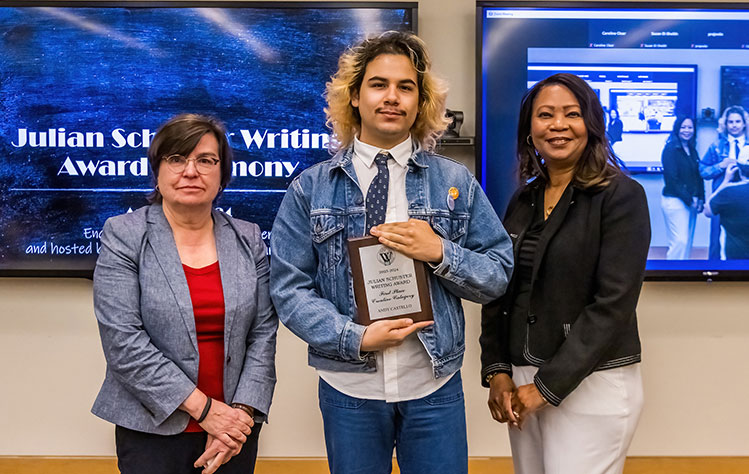
Second place for creative writing went to Kaitlyn El-Sheikh for her piece "Decaying,” which was written as part of Mary Baken's introduction to creative writing course.
“This piece is about the experience of losing my grandpa to pancreatic cancer,” explained El-Sheikh. “I’m honored to be able to share his story with everyone! He was a very talented and hardworking man with all the knowledge in the world. I know he would be proud that I took this moment in our lives and turned it into something good.”
Rounding out the creative writing winners was Megan Meade with her personal narrative, "My Dynamic Journey to a Relationship with Nature." Meade wrote the piece as part of Corin Pursell's Introduction to Sustainability course and took third place in the creative writing category.
Semi-finalists who were also recognized at the ceremony included Octave Brun, Shelby Ilko, Muslima Murodjonova and group, Parker Murrow, Styx Nappier and Veronika Tomchani.
Special thanks to this year’s judges: Carolyn I. Brown - Assistant Director, Reeg ARC, Webster Groves Shokhsanam Djalilova - ESL and GCP Program Lead, Tashkent Kim Kleinman – Special Assistant to the Director, Gleich Honors College, Webster Groves Ralph Olliges - Chair, Graduate Department of Education, Webster Groves Carolyn Trachtova - ESL Program Director, Webster Groves Kwan Willhoft - Head Writing Coach, Reeg ARC, Webster Groves
Related News
On April 25, Webster University honored freshman student writers at its Julian Schuster Writing Awards Ceremony. The event recognized outstanding...
Department of Art, Design and Art History Holds First Art Market
May 10, 2024
The Department of Art, Design, and Art History (DADAH) recently held its first DADAH Market, organized by the Webster Art Coalition and Webster University’s...
Faculty-Led Programs Bring Webster Students Around the Globe During Spring Break
May 2, 2024
Most college students spend their spring breaks traveling, partying or just relaxing. This past spring break, 44 Webster University students chose...

$1000 prize & publication with Vine Leaves Press
- May 17, 2024
- Writing Contests

Deadline: July 1, 2024 It is our responsibility to give marginalized groups the opportunity to establish literary legacies that feel rich and vast. Why? To sustain hope for the world to become a more loving, tolerable, and open space. It always begins with art. That is why we invite you to enter the 2025 International Voices in Creative Nonfiction Competition. Visit our website and view our flyer for more information.
Want early access to our eLitPak flyers? Subscribe to our weekly newsletter ! You can also support NewPages with a paid subscription and get early access to the majority submission opportunities, upcoming events, and more before they are posted to our site.
Interested in advertising in the eLitPak? Learn more here.
View More from the Blog
Discover More
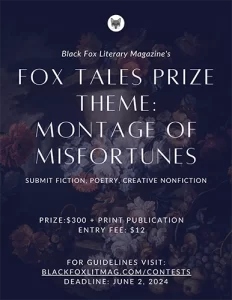
Contest and Submission Opportunity from Black Fox Literary Magazine!

Affordable Online Poetry, Publishing, & Critique Workshops / Poetry Editing & Mentoring

2024 Charles Simic Prize for Poetry

Write in the Redwoods!

COMMENTS
When describing a cat's fur texture, you can use words like soft, silky, fluffy, or smooth. These words help create an image in the reader's mind about how the fur feels to touch. For example, "Her fur was as soft as silk" provides a vivid description of the tactile experience. The length of a cat's fur can also vary greatly.
Emotional Connection. Evoking empathy for the cat character. Dialogue and Interactions. Giving the cat a distinct voice. Interactions with other characters. Revising and Refining. Seeking feedback on cat descriptions. Frequently Asked Questions about How To Describe A Cat In A Story.
A cat's eye story, therefore, is an act of projection of the human into the cat. It is a human experience of a uniquely human ability: the ability to project themselves imaginatively into others, including animals. This ability is at the root of our capacity for sympathy and our love of stories.
If you love cats - whether you've got one curled up next to you or you're just crazy about them - you're gonna love this post.. We have got a bunch of writing ideas all about cats, just for fun.. They're perfect if you need a silly story idea, or even just want to think about cats in a whole new way.. So, get comfy, maybe grab a cat-shaped snack, and let's get those creative ...
It smells different from usual. Salty. Instead of petting me again, she wipes away wetness from her cheek. I help her by licking it. "Fandango!" she says with a small chuckle. "You're a cat not a dog!". I don't understand it when she says this. Dogs don't help groom others. They can't even groom themselves.
Don't worry, just take a look at our 52 writing prompts about cats: Write a day in the life story from the perspective of a cat. Dogs are better than cats - Write a story about dogs versus cats. Your cat lives a secret life as a cat burglar. You live on the streets and become friends with a cat just as poor as you.
Cats. - quotes and descriptions to inspire creative writing. Search entire site for Cats. The cats had fur of buttermilk and moved through the spring light as if were their own special kind of water. By Angela Abraham, @daisydescriptionari, January 8, 2021 . Calico cats flowed through the brindled twilight.
Before writing your cat story, look for some inspirations for your feline characters. Spend some time on observing real-life cats - what their personality are, how they usually respond to things, and what their common mannerisms are. Figure out how cats generally think, feel, and act. Get as much information about them as you can through ...
Why Writing From the Perspective of a Cat Will Help You Become a Better Writer. A story becomes alive in the details. Yet, often we take our own perspective for granted. ... For a creative writing class I took at the University where I received my Bachelor of Mouse Hunting Degree, I wrote a story about a kitten I helped raise. In the story I ...
Cats know what they're doing; it's willful obstinance and a subversion of the creative process. Cats do not feel writing is necessary to the enrichment of life. Moxie expresses her indifference at the day's toiling. In carrying on with this argument, individuals will further dispute my claims by citing perhaps the most cat-friendly writer ...
50 Cat Poem Writing Prompts. A kitten's first wobbly steps across the floor, paws slipping and sliding as it learns to walk. The soft purr of a sleeping kitten, curled up in a fuzzy ball of warmth and comfort. A playful cat, stalking and pouncing after a toy mouse, kinetic energy bursting with each leap.
My cats know where they like to be. The bathroom cabinet drawers, the wastepaper basket, the underwear basket. Their favourite — my spouse's office chair. Ruling the roost, much? The obvious takeaway — have a fixed writing nook. The less-obvious takeaway — have more than one nook where you feel comfortable and creative. And you don't ...
How to write a cat. 1. Behemoth. Behemoth, a character in Mikhlail Bulgakov's masterpiece The Master and Margarita, is indisputably the top cat of literature. 'A cat the size of a pig, black as soot and with luxuriant cavalry officer's whiskers', he appears in Moscow with his master, the Satanic Woland. Woland and his entourage proceed ...
14 Writing Prompts about Cats. Our four-legged furry feline friends, cats are a welcome member of many a household around the country, and the world! With their quirky, and sometimes indifferent, ways, they certainly have their own idea of what a life well lived is. Today we'll take a look at cats and how they interact with we mere humans ...
6 Prompts for Articles About Cats. 1. Cat Care at Home. You can use this prompt to answer the most basic questions a future cat owner should consider before adopting a cat. Dedicate your article to guiding cat owners on how they can care for their pets at home.
The dog admitted cats are better than dogs. 7. A dirty litter box. 8. The cat saved the baby's life. 9.The cat was an author and taught kittens how to read. 10. The cat jumped onto a speeding car. My dog Martha just noticed the list of Cat Writing Prompts and wanted a list for dogs as well.
Cats are some of the most beloved animals to humankind; this article contains writing prompts and essay examples to help you write essays about cats. When you think of animals, two things come to mind: cats and dogs. Cats are some of the most popular pets, as they are, for the most part, relatively independent, low-maintenance, and easy to care ...
Training a cat to perform a trick like "writing" requires patience, time, and a lot of positive reinforcement. The first step is to find a paw-operated device that your cat can use. This can be a small keyboard, a touchpad, or even a specially designed tablet. Once you have the device, you can start training your cat.
A very funny story for cat-lovers of all ages - about a crazy cat lady who lives in a house filled with musical cats in the magical town of Ballyyahoo in Ireland. Maggie-many-cats loves her cats and loves her chocolate, in that order. Mostly she's a peaceful woman but she does still enjoy the odd feud, especially with Biddy - the woman ...
Whether you're an aspiring writer, a seasoned author, or simply a lover of creative storytelling, we've created a collection of 22 Warrior Cats writing prompts that will whisk you away to the mystical world of ThunderClan, RiverClan, ShadowClan, WindClan, and beyond. You might also enjoy this list of fantasy writing prompts.
In this narrative, a young warrior cat falls in love with a cat from a rival Clan, defying the strict laws of their own Clan. The story explores the challenges they face, from hiding their relationship to dealing with the consequences of their actions. It's a tale of love, loyalty, and the price of breaking the rules.
These ineffective hooks exist in creative writing, too: "'Twas a dark and stormy night," for example, or "My mama always told me, 'Life's like a box of chocolates.'" I'd rather read about a cat that has absolutely nothing to do with the story than dialogue from characters I don't even know or the weather happening during the ...
The cat is a domestic animal. Its scientific name is Felis catus. It is a small animal that belongs to the "Felidae" family. The cat is the only domesticated species of the family. Other members include tigers, panthers, etc. Cats are adorable animals and are petted by lots of people in the world. They are playful and spending time with ...
By Luisa A. Igloria. 2024: a milestone year which marks the 30 th anniversary of Old Dominion University's MFA Creative Writing Program. Its origins can be said to go back to April 1978, when the English Department's (now Professor Emeritus, retired) Phil Raisor organized the first "Poetry Jam," in collaboration with Pulitzer prize-winning poet W.D. Snodgrass (then a visiting poet at ODU).
Video summary. This short film presents a real-world context for writing a script and challenges children to write a short script for a TV show. The presenter, Naomi Wilkinson, is on the set ...
Between my conversations with Reavis, studying African American literature with Dr. Sheila Smith-McKoy, and a creative writing class that I took as a junior, I rediscovered my love of literature and creative writing. In 2017, nearly 10 years after graduating, I finally self-published my first short story, "Rick Jr." which is the first ...
The Arts and Sciences Summer Exploration program offers middle and high school students one-week intensive enrichment courses intended to introduce them to new areas of study or allow them to engage in content they may already have an interest in. In-person classes meet from 9:00 a.m. to 4:00 p.m. Monday through Friday, and are taught by Ohio State faculty, staff, and graduate students.
6 min. Eight or nine years ago, an old friend called seeking advice. She was trying to write a novel, but she was also a new mom with a full-time job, and she was exhausted. I, who had breezily ...
On April 25, Webster University honored freshman student writers at its Julian Schuster Writing Awards Ceremony. The event recognized outstanding academic and creative writing pieces nominated by faculty across Webster's campuses around the world. The Julian Schuster Writing Awards, formerly the Freshman Writing Awards, is an annual event ...
NewPages is news, information, and guides to literary magazines, independent publishers, creative writing programs, alternative periodicals, indie bookstores, writing contests, and more. Contact Us. Hours: Mon - Thurs from 9:30 AM to 3:00 PM; Phone: (989) 671-0081; Email: via our Contact Form; Mailing Address: NewPages PO Box 1580 Bay City, MI ...